You are using an out of date browser. It may not display this or other websites correctly.
You should upgrade or use an alternative browser.
You should upgrade or use an alternative browser.
Rock slide in Fraser River, B.C., may hinder salmon passage
- Thread starter wildmanyeah
- Start date
High Time
Crew Member
T
The information in quotations was lifted from a government sign at the Kenney dam. The rest is from the 15 years I spent on the Fraser Panel of the Pacific Salmon Commission.Where did you cut and paste that from?
GLG
Well-Known Member
Big Bar landslide response information bulletin
February 8 2021Steady progress being made on permanent fishway
Work at the Big Bar landslide site continues on schedule as crews maintain a steady pace of progress. Over the last two weeks, the primary focus has been on: building the rockfill surface upon which the permanent fishway will be built; preparing for the installation of pilings at the north end of the fishway; and ensuring site safety through continued rock stabilization and mesh installation.Crews are nearing completion of the permanent fishway embankment. They are also continuing to quarry and process rock for use in the building of the fishway foundation on top of the embankment and in the construction of the new “nature-like” fishway. The resulting material is routinely checked to ensure its suitability for its intended use at the site; tests are performed for adequate density and ‘hardness’ for stability.
Archeologists continue to assess the East Razorback and the surrounding area in preparation for the expansion of the site’s operations centre. This area will accommodate equipment storage and space for a field office.
Materials for the construction of the crew camp are beginning to arrive in Lillooet. From there, they will be transported to the KM96 camp location once site preparation is complete.
Finally, crews are preparing for the installation of the permanent fishway pilings. The large drilling rig has made its journey from KM96 to the West Beach while the required pilings have been airlifted from the east laydown area to the slide site. The construction of a ramp to facilitate installation is now complete.
Current images of work being done at the landslide site
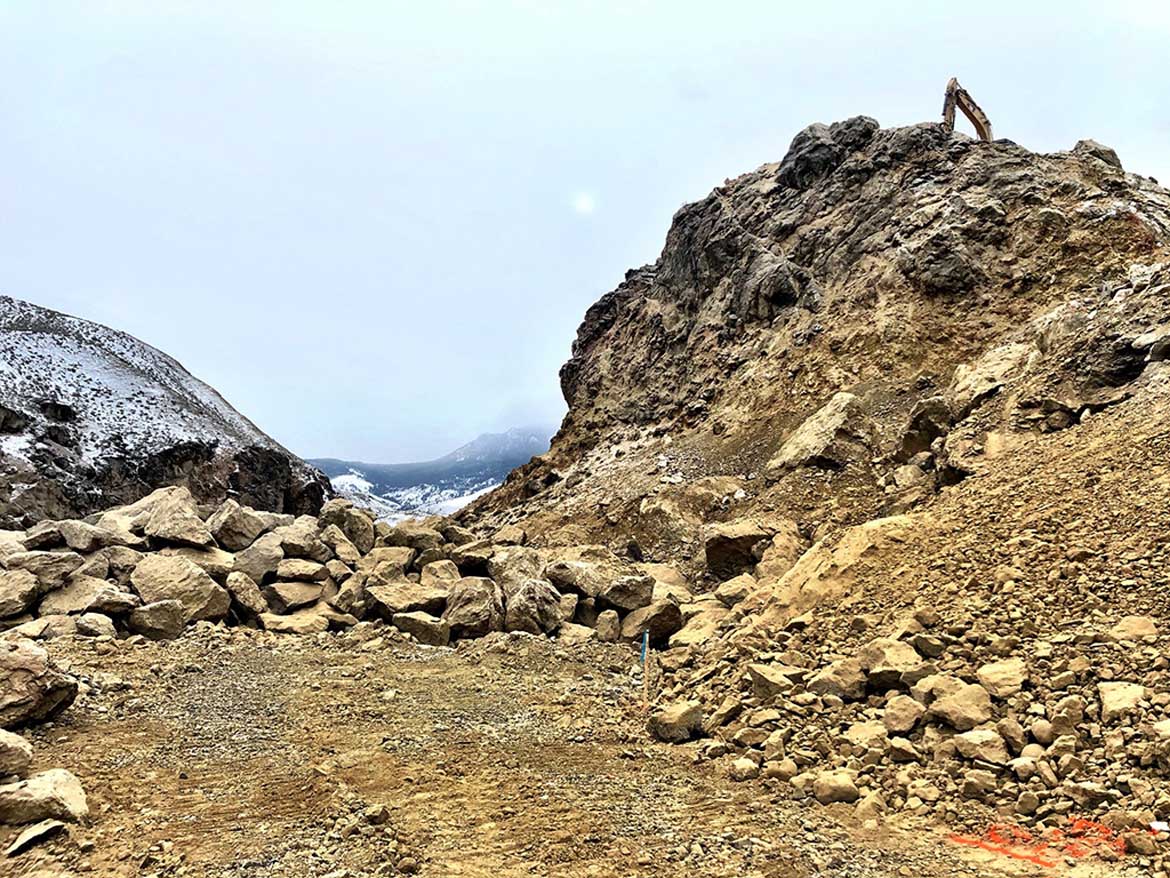
Materials for the permanent fishway foundation and the new “nature-like” fishway are being processed on the East Razorback.
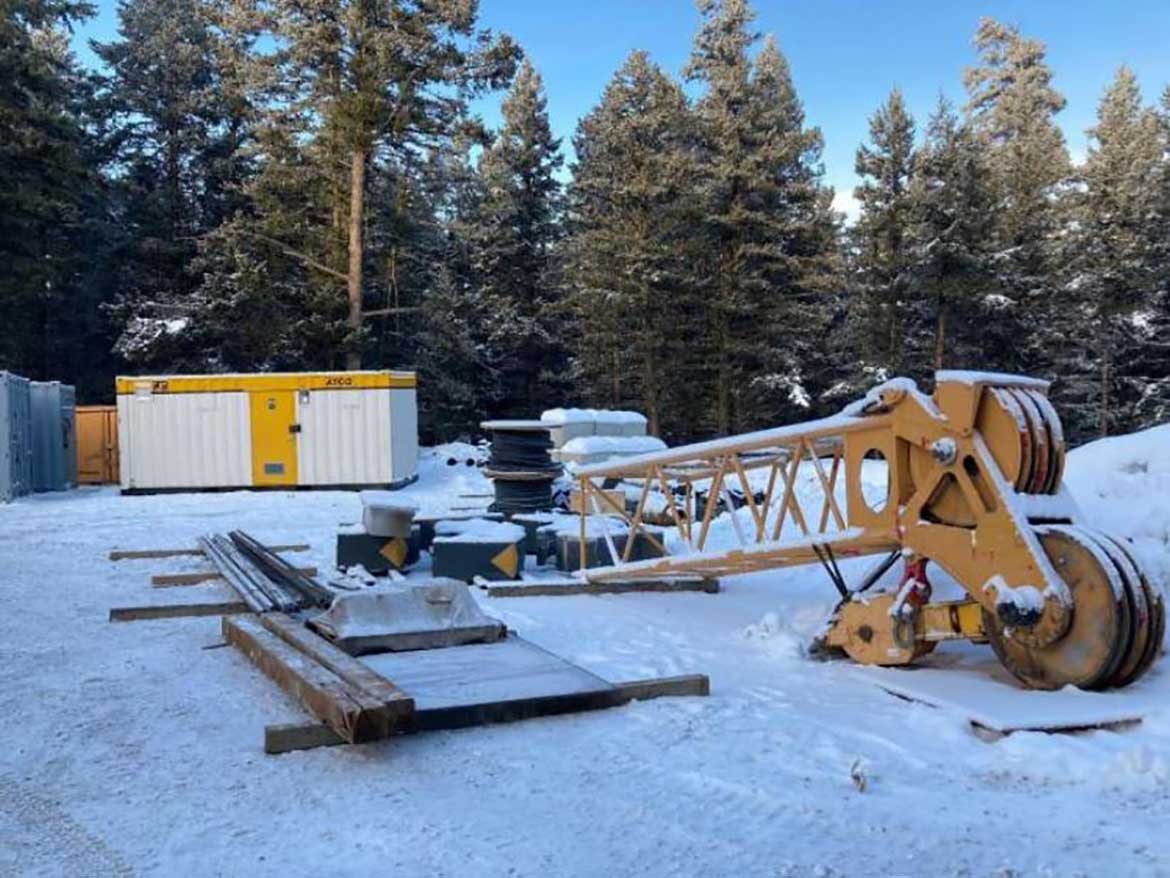
The drilling rig, before it began its four-day journey from KM96 to the West Beach.
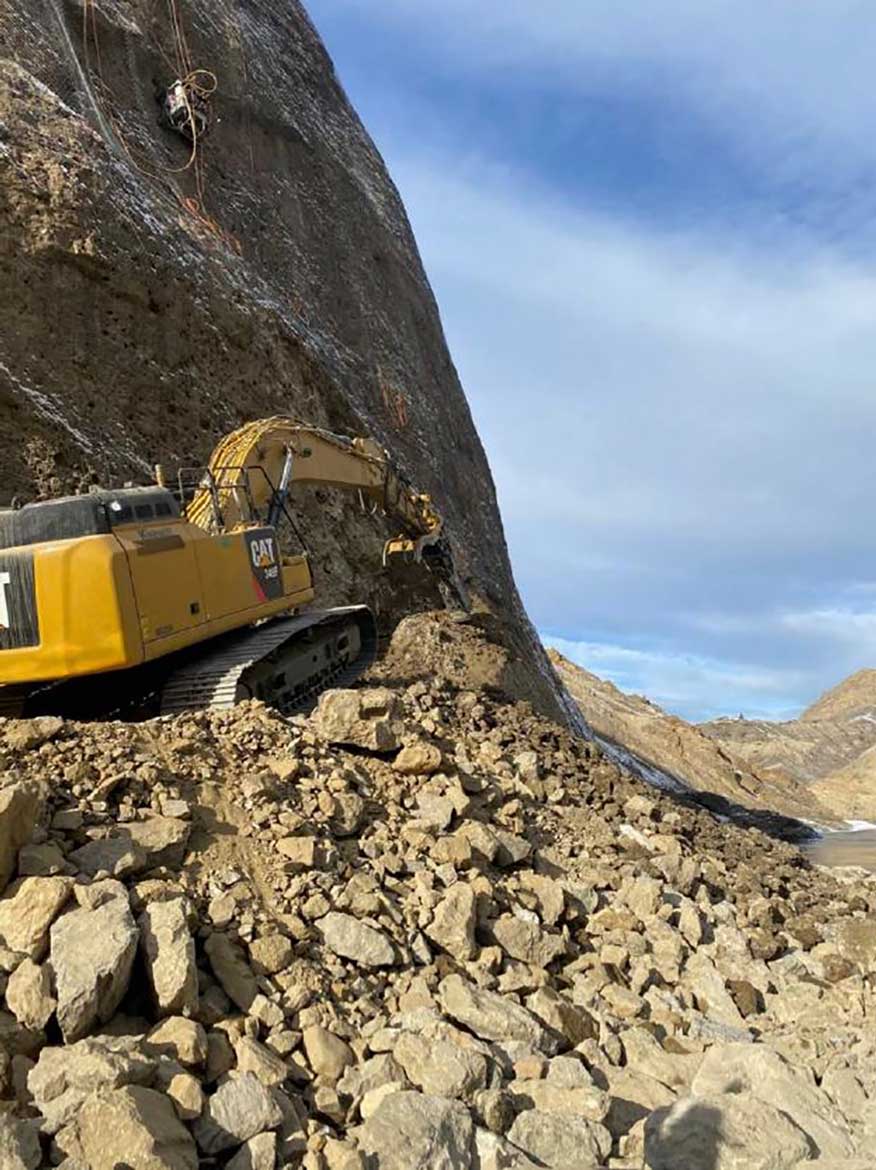
Fishway preparations underway at West Beach, next to the Fraser River.
https://www.pac.dfo-mpo.gc.ca/pacific-smon-pacifique/big-bar-landslide-eboulement/index-eng.html
GLG
Well-Known Member
#BigBarLandslide response update: Preparations are underway for the installation of pilings. The large crane that will set the piles has been moved onsite and is being assembled for the construction of the permanent #fishway.
https://www.pac.dfo-mpo.gc.ca/pacific-smon-pacifique/big-bar-landslide-eboulement/index-eng.html
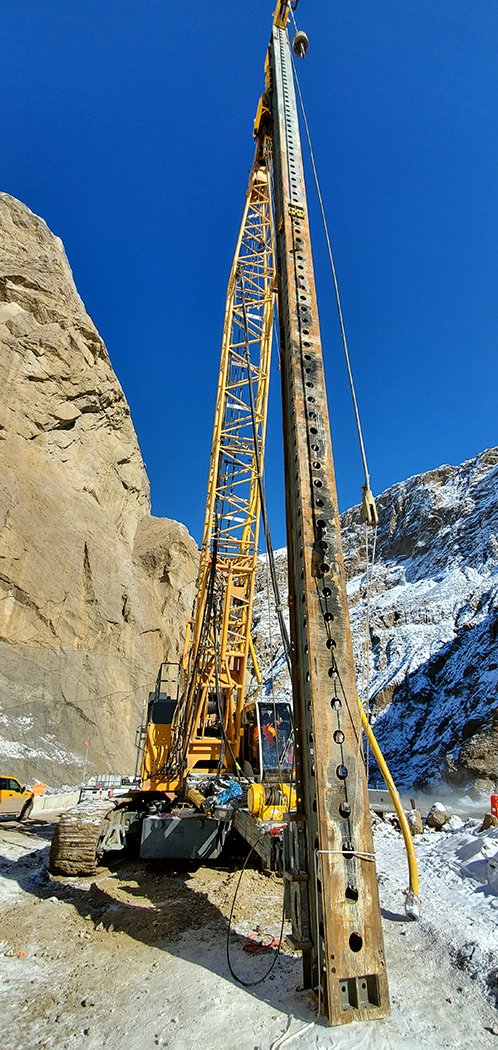
https://www.pac.dfo-mpo.gc.ca/pacific-smon-pacifique/big-bar-landslide-eboulement/index-eng.html

GLG
Well-Known Member
Big Bar landslide response information bulletin
February 22 2021-40 C and chilly
Temperatures were cold but a successful ‘trim blast’ stirred things up at Big Bar this week. On February 13, the team was smiling after a successful blast of the canyon wall to straighten the future path of the permanent fishway. On February 14, crews also completed additional blasting of the Razorback and began excavating various grades of rock required for construction.Other work included finalizing the grade of the embankment on which the structure will be built.
Winter conditions at Big Bar
Temperatures at site reached -40 C with heavy snowfall and freezing rain causing periodic shutdowns. These interruptions have affected the timeline for some of the cliff stabilization work and the upcoming pile driving for the north end of the fishway. To make up time, the prime contractor, Peter Kiewit Sons ULC, has added double shifts in some areas.Water levels vary considerably in the Fraser River throughout the year. However, the levels have consistently dropped since December and crews have been able to access the river bed and perform in-river work necessary to build the fishway. The brief, critical window between December and April allow crews to finish the winter work before the snow melts and freshet occurs again. Operations will then shift to assisted transport of the early migrating fish that will be blocked by the slide.
Commencing and continuing construction on the permanent fishway during the winter low water remains essential to improving the survival of early migrating salmon stocks.
Roadwork contract awarded to Prime Quality Construction
On January 21, the BC Ministry of Forests, Lands, Natural Resource Operations and Rural Development (FLNR) awarded a road upgrade contract to Prime Quality Construction Inc. (PQC) following a competitive bid. PQC is an Indigenous owned company operated by a member of the High Bar First Nation.In the coming months, based on a FLNR design, PQC will widen and realign the Chinook Main road that connects Beach One to the French Bar Creek area . The improved road will be safer for crews and allow trucks carrying custom 17,000-litre fish tanks to pass during the critical fish “trap and transport” operations. PQC will also install radio communications towers at regular intervals along the road so truck drivers can coordinate during fish transport operations.
Rock sorting is underway here and this material will then be used on the road to French Bar Creek to re-slope cut banks, widen the road and create pullout areas for work trucks. In some areas, vertical walls made from soil, fabric and wire frames, also known as Geosynthetic Reinforced Soil Walls (GRS), will be used to support the road instead of the rock fill. The GRS will provide additional stability by containing the material below the road as their vertical orientation uses space more efficiently than rock fills, which need to be sloped.
Current images of work being done at the landslide site
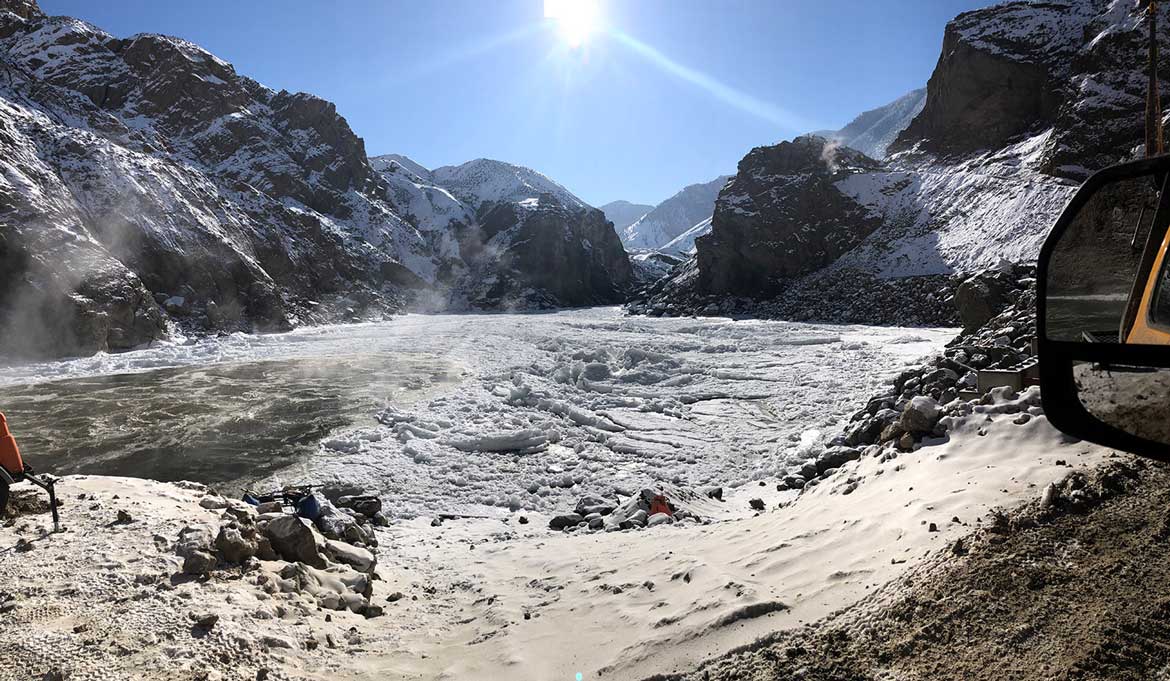
Cold temperatures have resulted in significant ice buildup in the Fraser River, including just south of the Big Bar landslide.
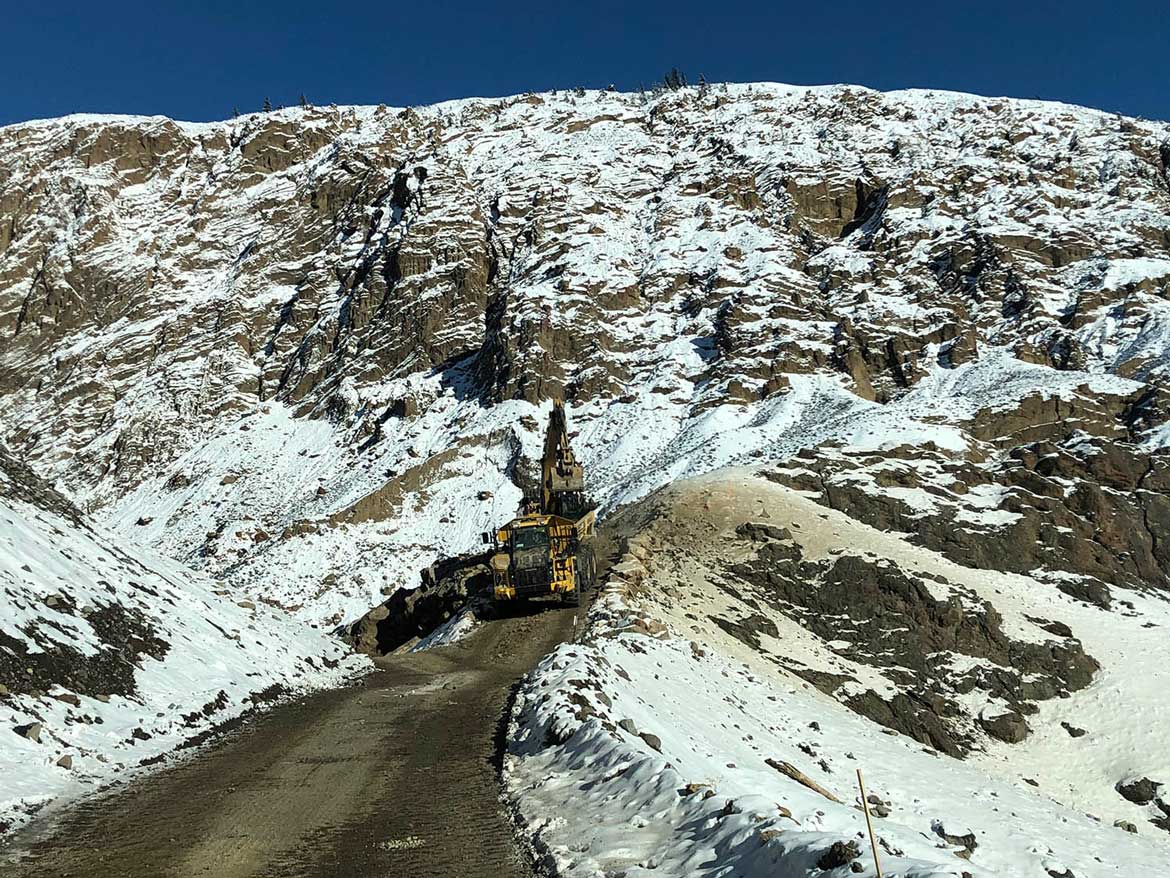
Road grade work on the East Razorback, where crews have been quarrying rip rap.
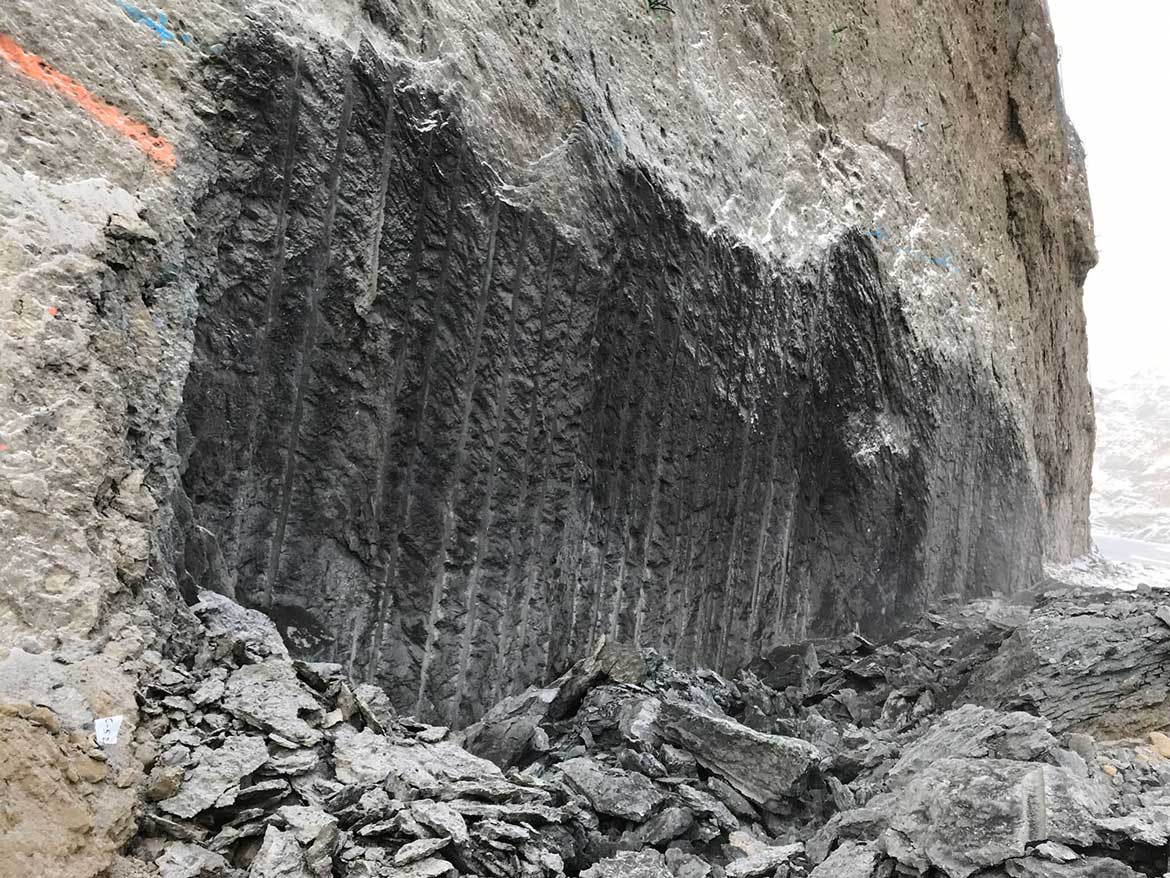
The rock face, after blasting occurred to remove rock from along the path of the permanent fishway for a straighter alignment.
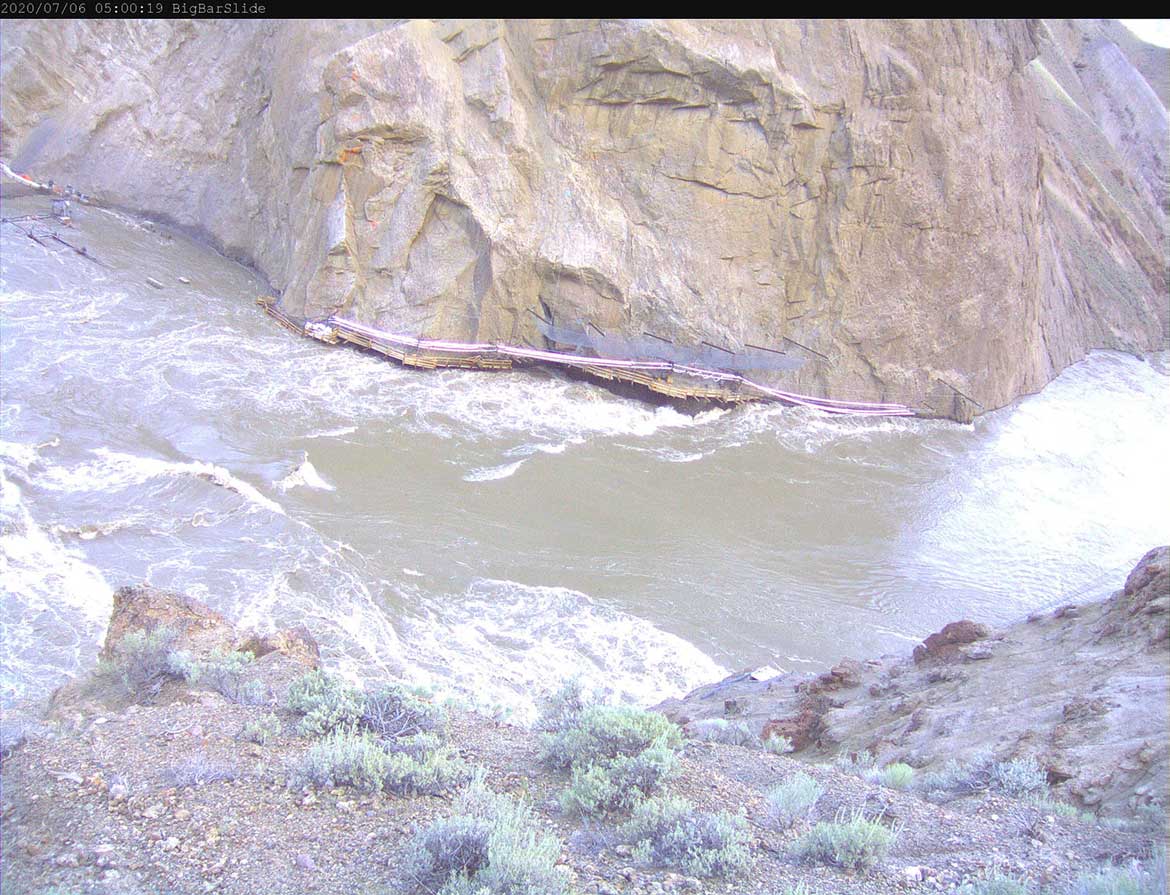
Water levels were exceptionally high, 6,640 m3/s at Big Bar on July 6, 2020.
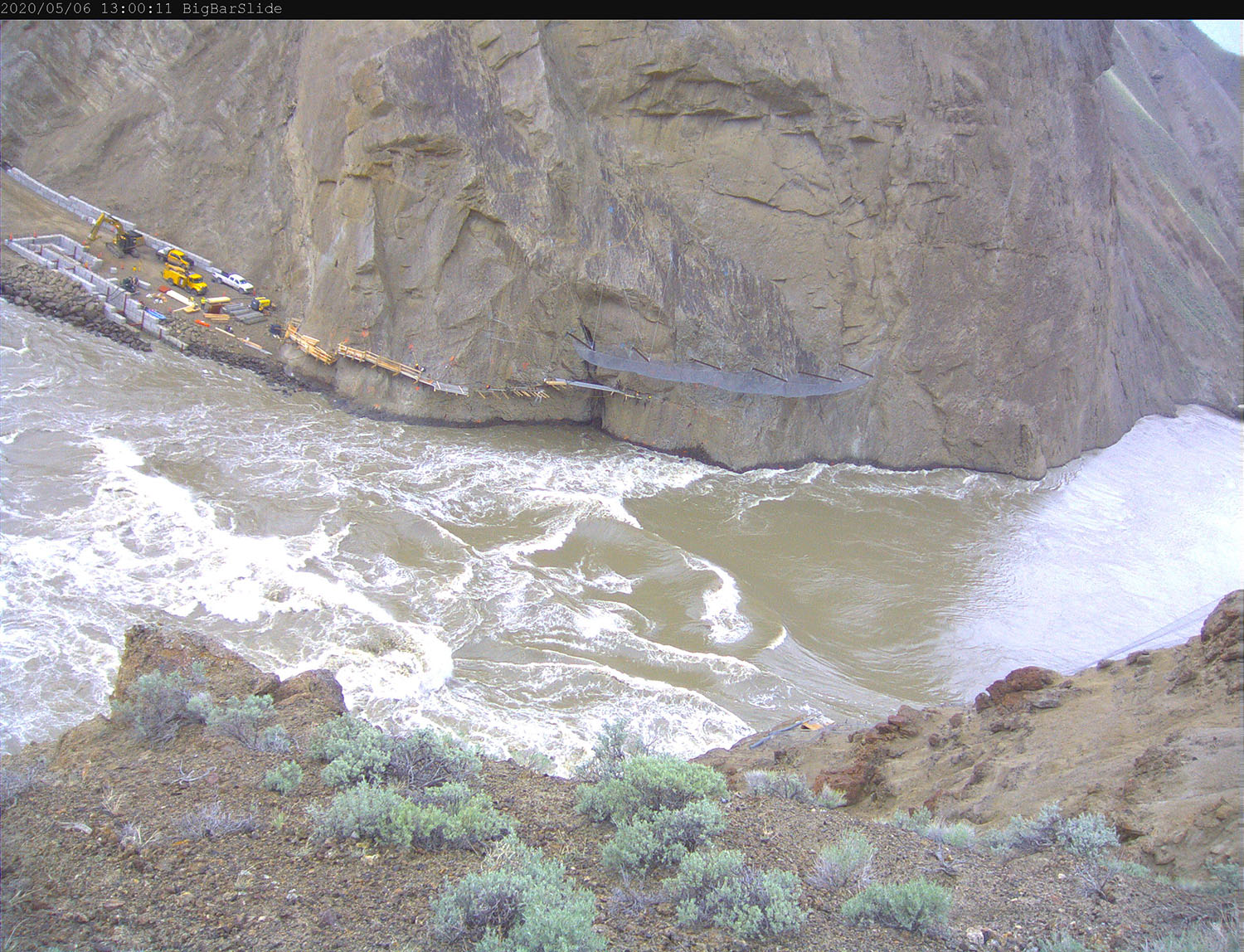
Moderate water levels at Big Bar, 3,750 m3/s at Big Bar on May 6, 2020.
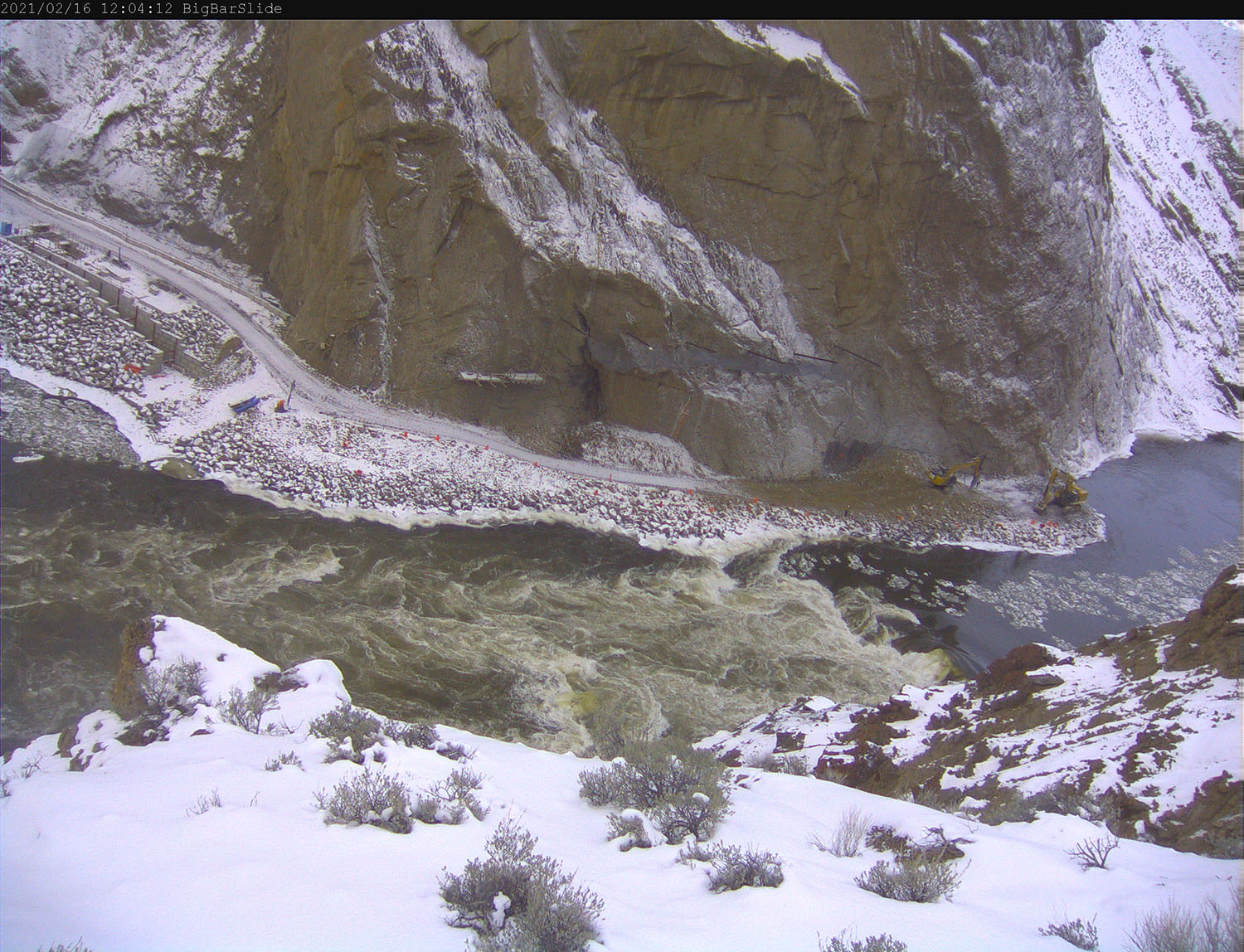
On Feb 16, 2021, water levels were 620 m3/s, facilitating winter works.
https://www.pac.dfo-mpo.gc.ca/pacific-smon-pacifique/big-bar-landslide-eboulement/index-eng.html
GLG
Well-Known Member
Big Bar landslide response information bulletin
March 8 2021Big Bar transformation underway
The Big Bar work site is evolving as pile driving for the permanent fishway structure and preparations for a work camp are underway.Crews assembled the large drilling rig after key components were hoisted into place by a heavy-lift helicopter. Pile driving then started last week at the north end of the permanent fishway. Two of the seven piles have been assembled but more work is required to complete their installation. Drilling has begun for the third pile and the remaining piles are expected to be in place in the coming days.
Rock fall prevention work continued over the past two weeks, with crews extending the protective mesh further north. Although rock scaling was halted on some days due to frozen ropes and high afternoon winds (40 to 65 km/h), prime contractor, Peter Kiewit Sons ULC, adjusted shift times to ensure scaling operations could continue.
Preparations for a work camp at the 96-kilometre mark of the West Pavilion Road (KM 96) are progressing. Additional archeological and environmental surveys were completed prior to clearing the footprint. The camp will house approximately 70 workers less than 15 km from the work site, significantly reducing the commute for those currently staying in Clinton. The camp will also eliminate the crews’ reliance on boat transport to get across the Fraser River.
Emergency Conservation Enhancement planning meeting at Lillooet
On February 17, DFO and First Nations technical partners, St’at’imc Eco Resources and Splitrock Environmental, met in Lillooet to review options for the 2021 emergency conservation enhancement operations. Together with Sekw’el’was and T’it’q’et representatives, the team explored potential collection sites, offloading access points, fresh water sources and other logistical considerations for brood stock collection in the area.This year the Big Bar task groups recommended the collection of brood stock from Early Stuart sockeye, and possibly early-timed Chinook, in Lillooet instead of the slide site due to past challenges. These obstacles include the remoteness of Big Bar, the significant infrastructure required and the travel time to enhancement facilities. Capturing brood stock downstream at Lillooet will resolve many of these issues.
Once the proposed plans have been reviewed, the task groups will submit a recommendation for the optimal transport and enhancement approach to the Joint Executive Steering Committee and the First Nations Leadership Panel to seek their endorsement.
Planning is also underway for the release of 2020 Chinook fry in late spring. The enhancement team is exploring suitable locations for their release and will connect with local First Nations once further details are known.
Current images of work being done at the landslide site
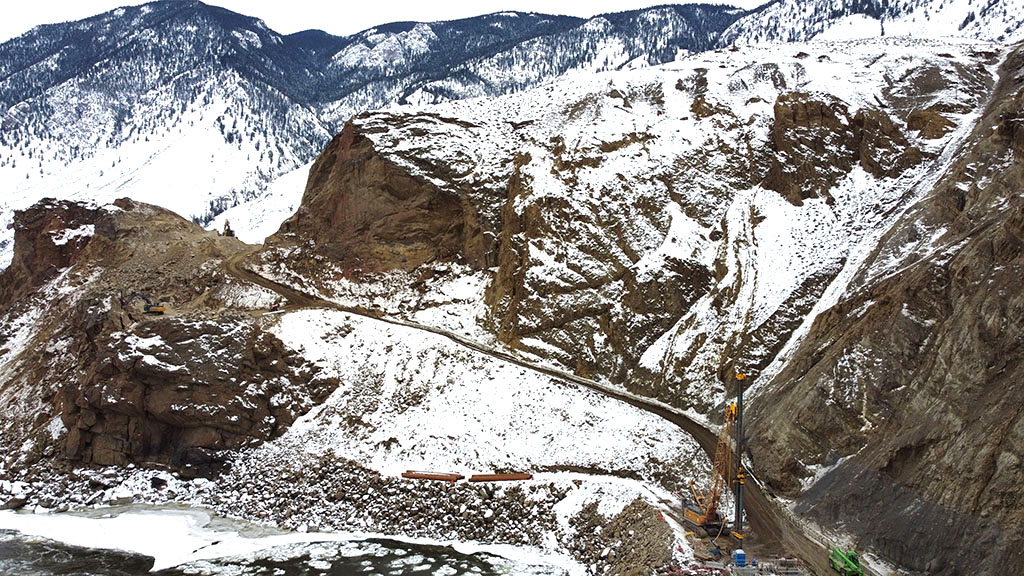
Aerial view of the Big Bar work site, February 20, 2021.
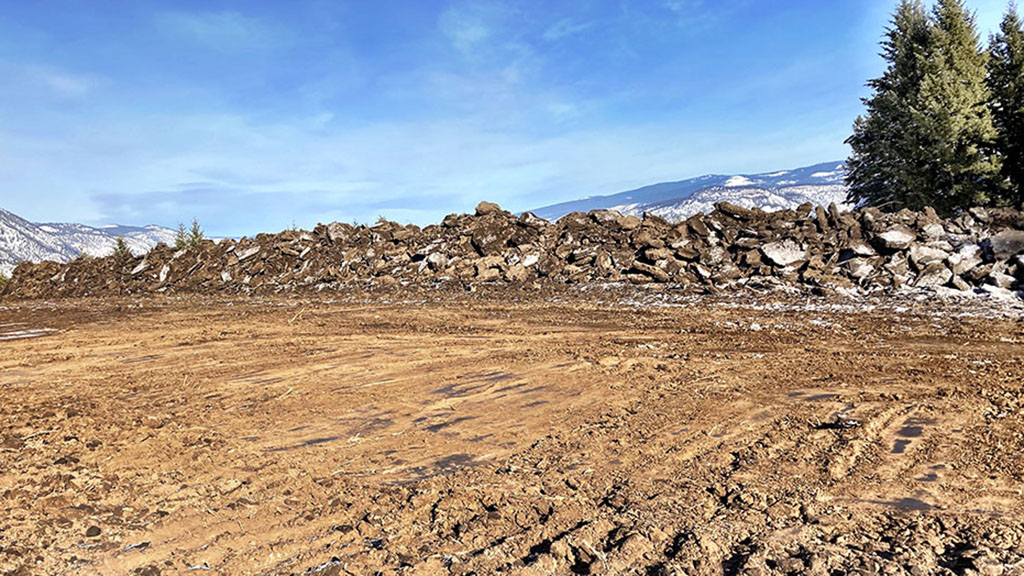
The work camp at KM 96, located 15 km from the Big Bar worksite, is expected to house up to 70 crew members during peak operations.
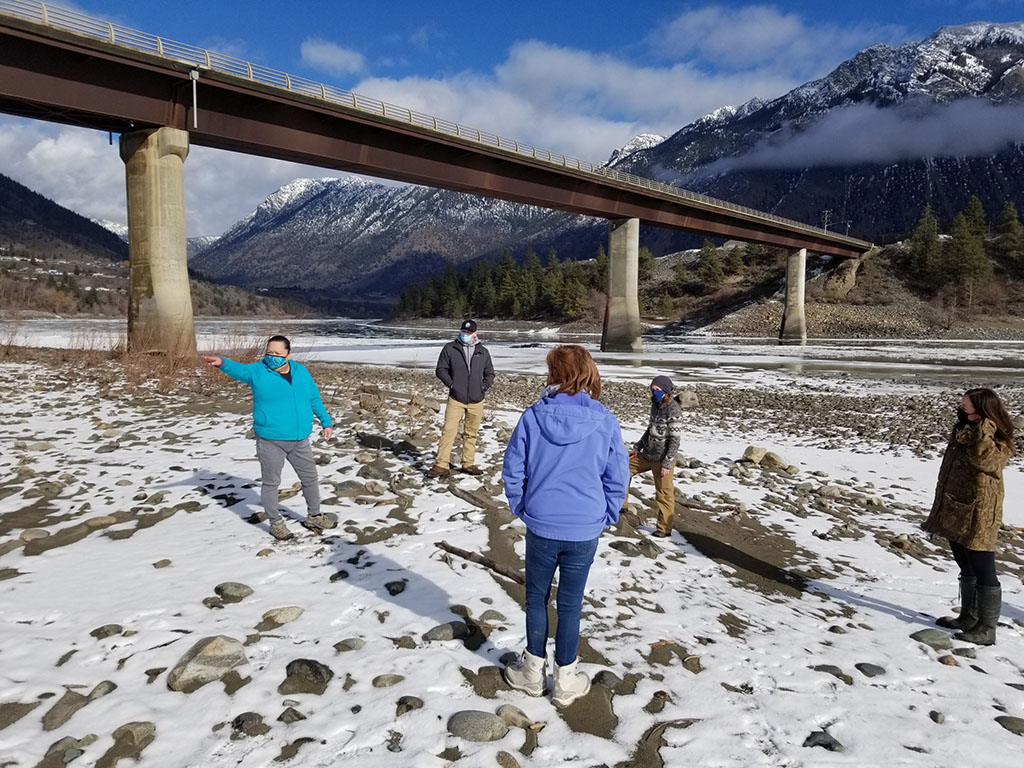
First Nations technical partners and representatives and DFO staff met in Lillooet to review 2021 enhancement plans.
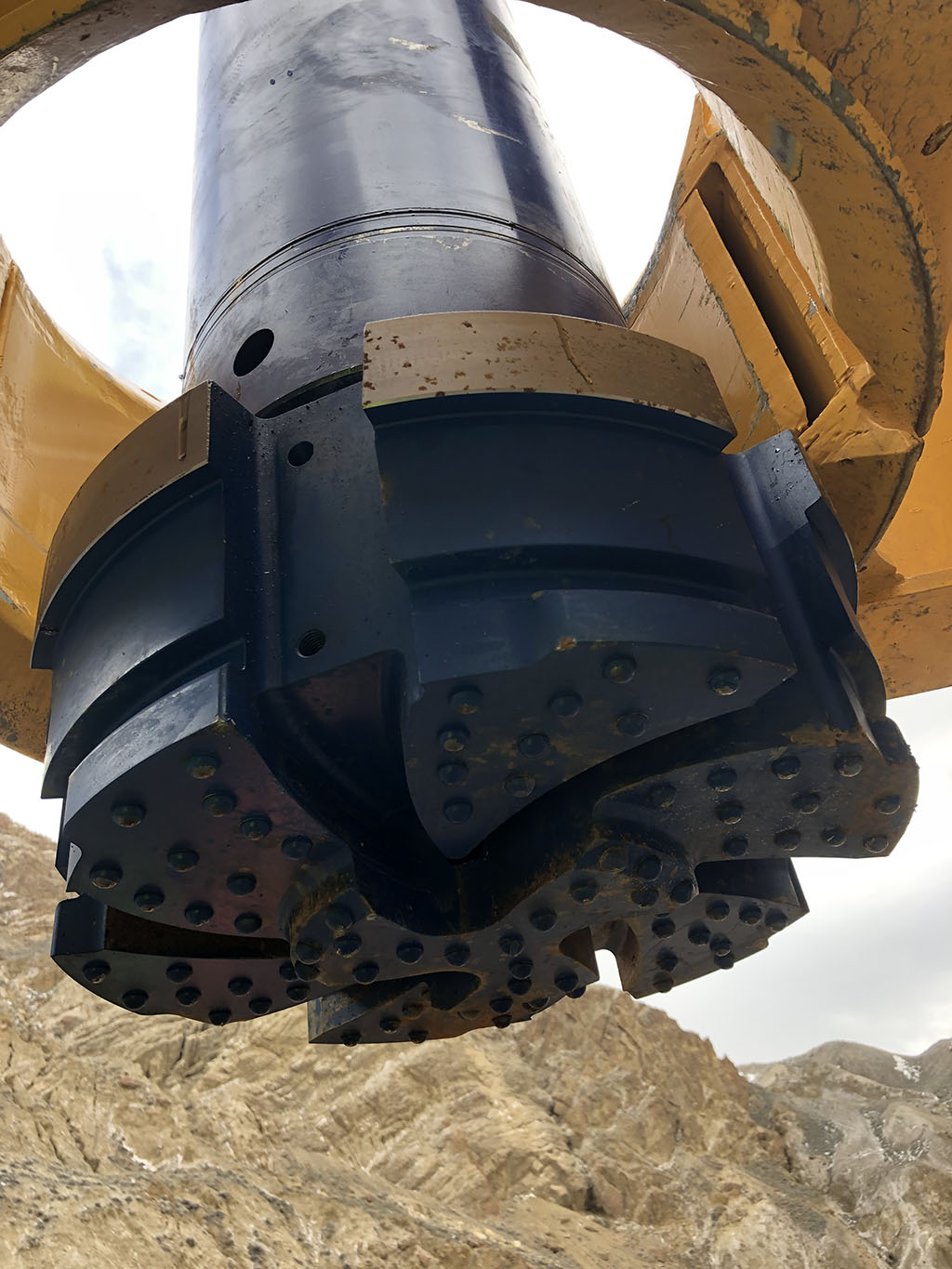
Drilling rig being assembled.
https://www.pac.dfo-mpo.gc.ca/pacific-smon-pacifique/big-bar-landslide-eboulement/index-eng.html
Thanks for the continuing updates! I like the idea of broodstock capture downstream of the slide area; the fish will be in much better condition resulting in fewer mortalities. One thing concerns me re the Early Stuart sockeye hatchery enhancement is the fact the ES component is made up many different stocks that rear in 3 different lakes ... afaik there is not a DNA sampling protocol in place to identify these different stocks ... so I wonder how important homing fidelity is to these fish?
GLG
Well-Known Member
Big Bar landslide response information bulletin
March 22 2021Evolving site conditions shift focus to “nature-like” fishway preparation
Operating within the bounds of an unpredictable and temperamental rock face has always been one of the biggest challenges for the Big Bar landslide response team. Successive freeze-thaw cycles in the last three weeks have resulted in sudden rock falls in the area, including two at West Beach within the job footprint, despite the myriad of protection measures in place. Crew members were only on-site for one of the events and no one was injured. A broader review is underway to further assess the slope conditions. Regular scaling, rock bolting and grouting occurs on this face along with continuous monitoring using high tech drones, Light Detection and Ranging (LiDAR) scanners, survey prisms and manual surveys. Much of the slope is covered in drape mesh, secured with bolts, posts and wire rope. A large canopy also protects a portion of West Beach.To ensure the safety of the crew and in anticipation of the upcoming spring freshet, piling work for the permanent fishway has concluded for the 2020-21 winter season. Crews are shifting their focus to other priorities ahead of freshet, including the construction of the “nature-like” fishway and preparation of alternative fish transport systems.
Workers are excavating blasted material from the Razorback, with the rock being processed for rip rap and shot rock. Rip rap is essential for constructing the “nature-like” fishway, and the shot rock is used to build up the grade below the rip rap. This helps reduce the amount of rip rap needed for the fishway, as well as minimize disturbance at the Razorback, an area of rich cultural significance.
The camp site at KM 96 of the West Pavilion road also saw progress this past week with further archaeological assessments, topsoil stripping and site grading.
Similar to 2020, offsite teams are focused on planning for the truck transport of fish upstream to French Bar Creek, and preparing for emergency enhancement and a monitoring program for the 2021 migration season.
Maintaining safety remains paramount at Big Bar
Since 2019, safety at Big Bar has been a critical element for the landslide response. Understanding the overall slope stability is critical to accurately assessing the hazards associated with rock movement and ensuring appropriate mitigation measures are in place so work proceeds safely.Prior to operations commencing in January 2020, Kiewit submitted a site-specific Health and Safety plan that addressed risks onsite according to the contracting requirements. This plan was updated upon mobilization to site and again under the current contract awarded in November 2020. It is routinely reviewed and revised based on conditions at site.
Rock fall safety is a significant focus in all activities at Big Bar and includes rock scaling, installing rock fall protection mesh and slope monitoring to proactively address concerns:
- Rock scaling involves dedicated crews who repel down the cliff face, removing loose rock to ensure the protection of the workers and equipment below.
- Rock fall protection mesh includes the installation of steel mesh onto the cliff face above where crews will be working. Rods are drilled into the rock walls and the metal mesh is attached, smothering or catching falling rock.
- Rock bolts involve anchoring potentially loose blocks of rock to the competent rocks behind them using steel-threaded anchors.
- Weather monitoring involves onsite weather stations to record temperature, humidity, air pressure, wind speed, wind direction and precipitation. Rock fall risk increases during and following specific environmental conditions. Collecting the data at the site allows real-time monitoring to either permit or prevent crew access to the site based on recent environmental conditions.
- Slope monitoring includes scanning the cliff face using LiDAR technology to detect the movement of markers embedded on the rock walls. Slopes are also visually inspected each day. Combined, these methods provide an assessment of stability for the cliffs above work areas.
The volatile conditions at Big Bar are a persistent challenge; they cannot be easily anticipated or simply addressed. Being vigilant and cognizant of these conditions is critical as they could result in a shift in project execution, temporary suspension of work or the need for additional safety measures.
Current images of work being done at the landslide site
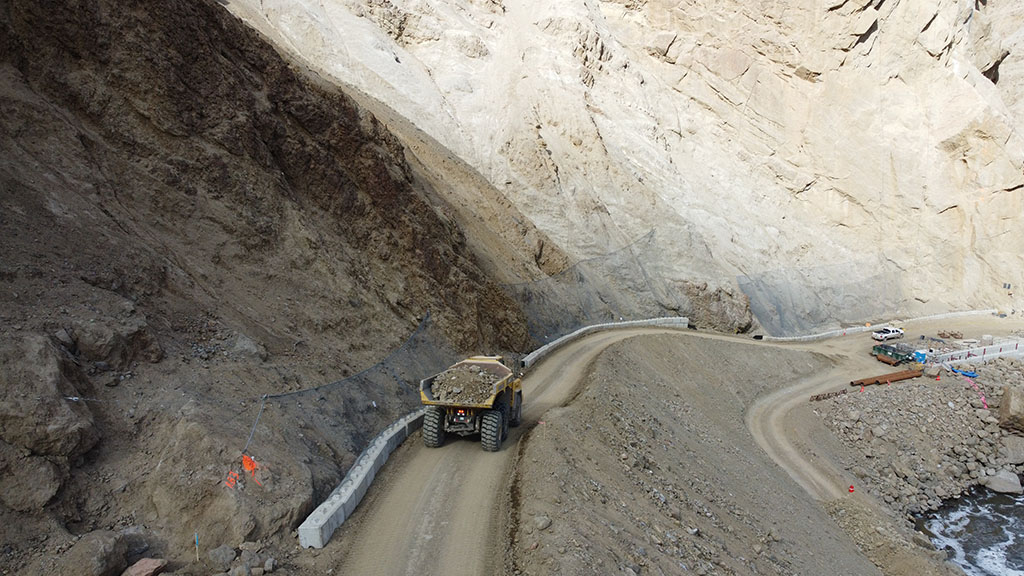
Trucks haul excavated material down to the West Beach for use in the “nature-like” fishway construction.
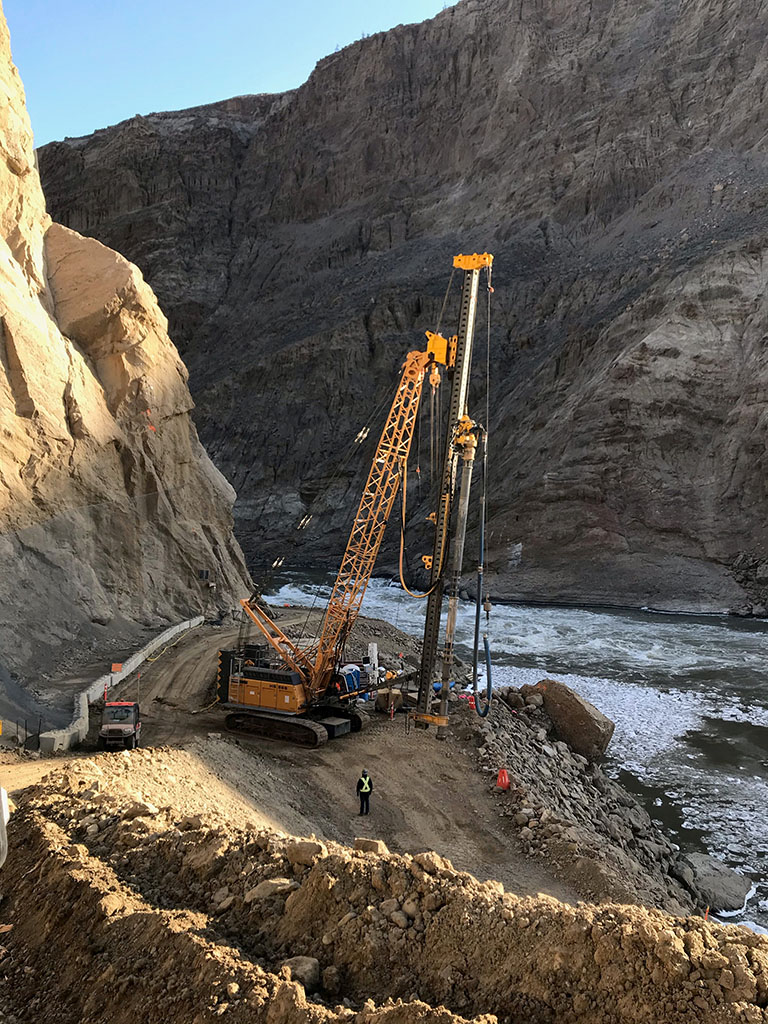
Crews have started to ‘walk’ the piling rig off site for the season, in advance of spring freshet.
https://www.pac.dfo-mpo.gc.ca/pacific-smon-pacifique/big-bar-landslide-eboulement/index-eng.html
wildmanyeah
Crew Member
Big Bar landslide response information bulletin
April 6 2021On this page
- Work on alternative fish passage systems underway
- Current images of work being done at the landslide site
Work on alternative fish passage systems underway
Spring work is underway at Big Bar, with the response team focused on implementing alternative fish passage systems, among other priorities, in advance of the 2021 Fraser salmon migration season.The construction of the “nature-like” fishway, which will allow fish to navigate past the landslide at lower and moderate flows, is nearing completion. Crews successfully blasted the rock outcropping at the south end of the fishway on March 20 and March 27 to straighten the path of the “nature-like” fishway, which will significantly improve fish migration.
At the West Beach, crews are reconfiguring the 2020 concrete fish ladder for use with “trap and transport” operations this year. The liner membrane of the structure is being upgraded with concrete floors to prevent erosion and damage, and improve ease of cleaning and maintenance. Silt that has accumulated at the bottom of the ladder is being removed. Construction has begun on a platform which will hold large pumps that supply water for the ladder. First Nations and DFO fisheries technicians will use the ladder to draw fish to a holding pool, where salmon will be collected, transferred to truck-mounted tanks and transported 4.5 km north for release back into the Fraser River.
Further bathymetric survey or underwater mapping is underway to better understand river grades, depth and water velocity at the “nature-like” fishway. Work on rock fall mitigation is ongoing with a focus on areas near where summer operations will take place.
Crews are also making progress on the work camp at KM 96, which will be used to house summer operations staff.
Current images of work being done at the landslide site
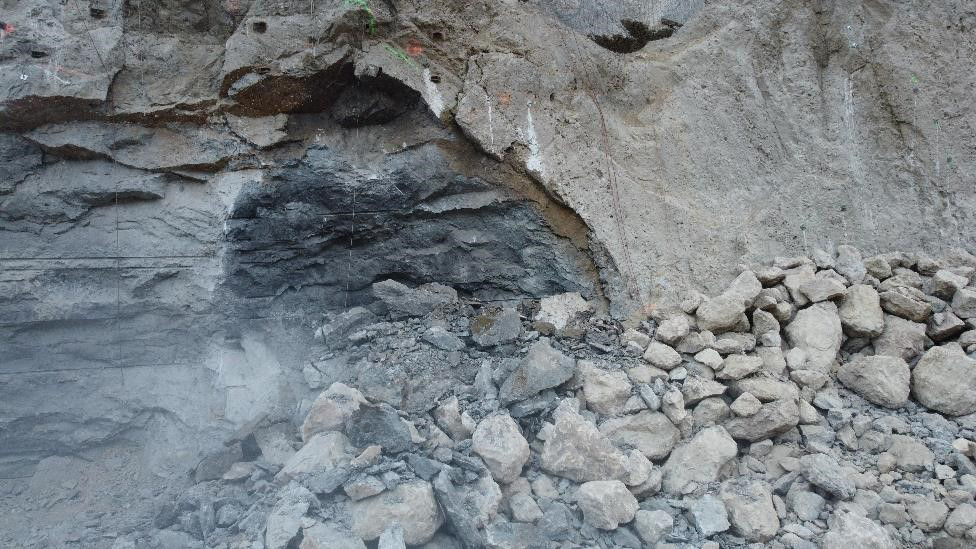 The rock face immediately after the second trim blast on March 27, 2021. Click to enlarge.
The rock face immediately after the second trim blast on March 27, 2021. Click to enlarge.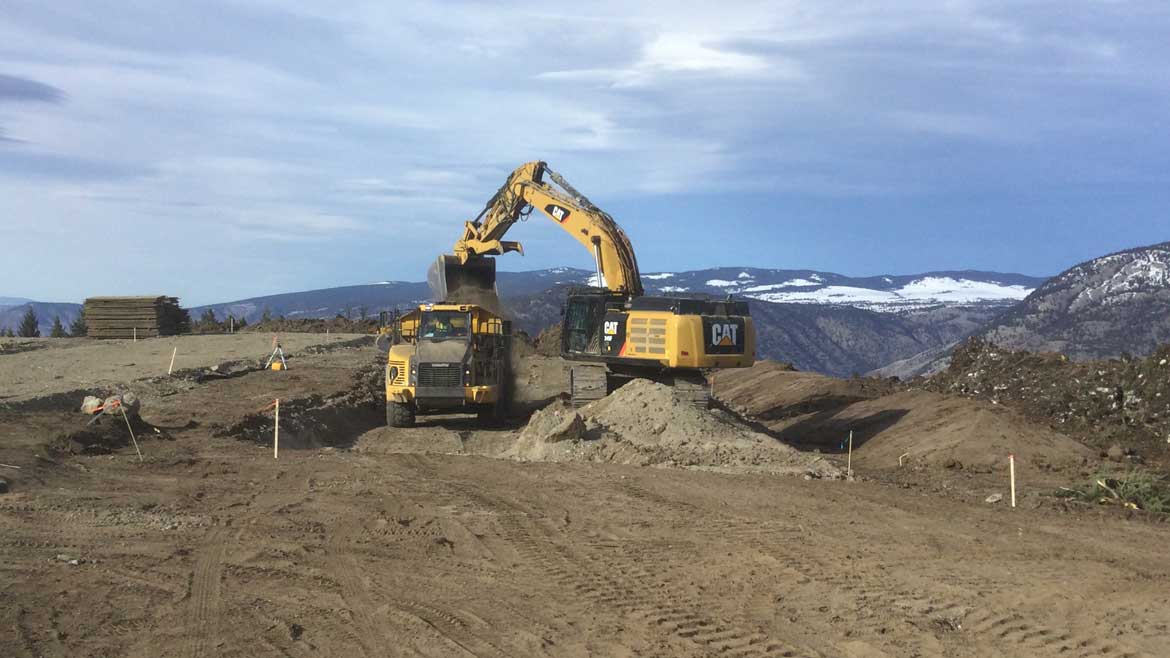 Machines level the ground at the future work camp site at KM96. Click to enlarge
Machines level the ground at the future work camp site at KM96. Click to enlarge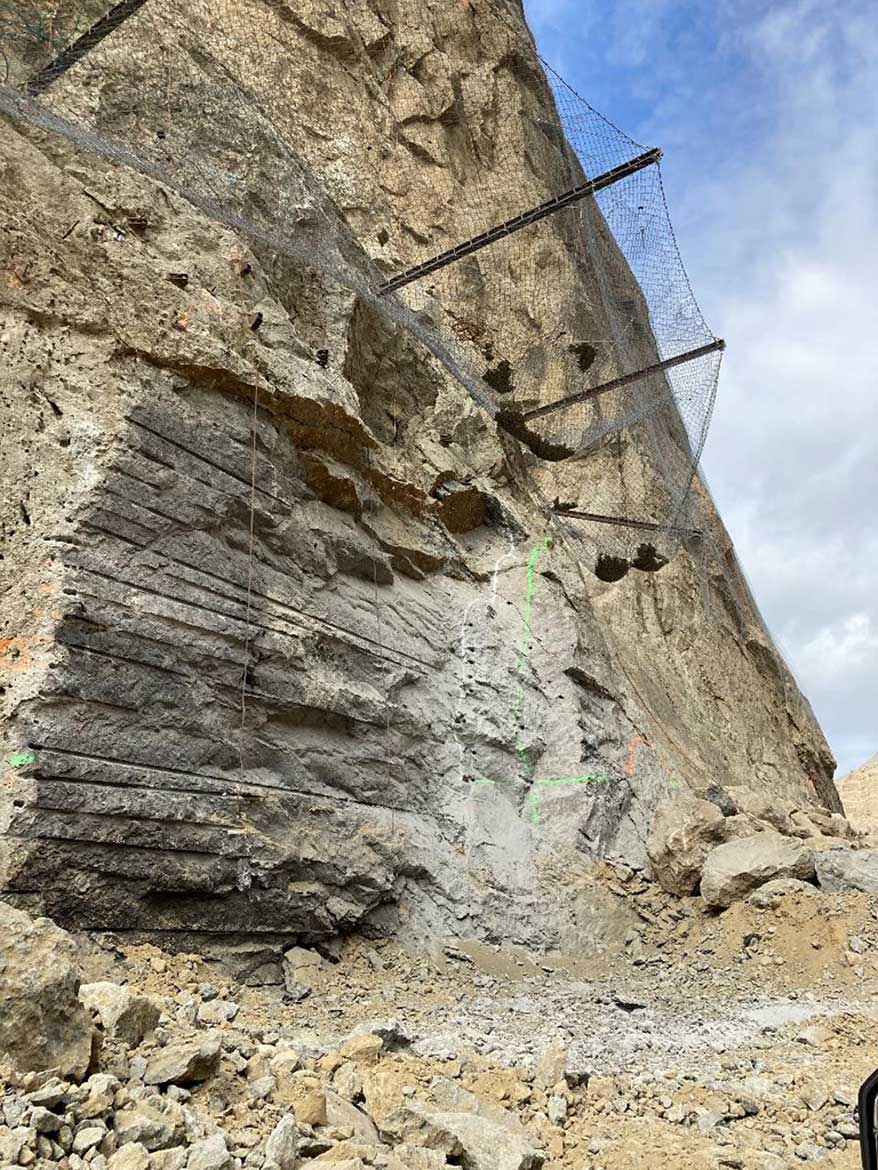 Crews completed drilling to prepare for the second trim blast. Click to enlarge
Crews completed drilling to prepare for the second trim blast. Click to enlargeImages of the work underway at the slide site can now be viewed under the Big Bar Landslide 2020 photo album on the Government of BC’s Flickr channel. Check back often as we will update the album regularly. Images from last year’s response efforts can be found under the Big Bar Landslide 2019 album.
GLG
Well-Known Member
Big Bar landslide response information bulletin
April 19 2021Concrete fish ladder gets an upgrade this spring
As crews put the final touches on the “nature-like” fishway ahead of the spring freshet, efforts have been primarily focused on upgrading the concrete fish ladder to support the summer “trap and transport” program.Workers have made progress with the ladder despite record high winds of 105 km/h this past week. They removed some of the lock blocks, along with the scaffolding and the walkway before excavation began on the area to the west of the ladder. The structure is being extended by 21m to accommodate an upgraded fish collection and transfer system for loading transport trucks. Mud slabs, or layers of concrete approximately 7.5cm thick, have also been poured below the foundational slab to replace the liner membrane of the ladder. Rock fall protection measures are being added to the slopes above this area.
Steady progress is also being made on the summer work camp, with the installation of dorms, plumbing, walkways and fencing to keep wildlife and crews safe.
With no further drilling and blasting scheduled at West Beach this season, equipment is being moved to KM96 for storage.
Current images of work being done at the landslide site
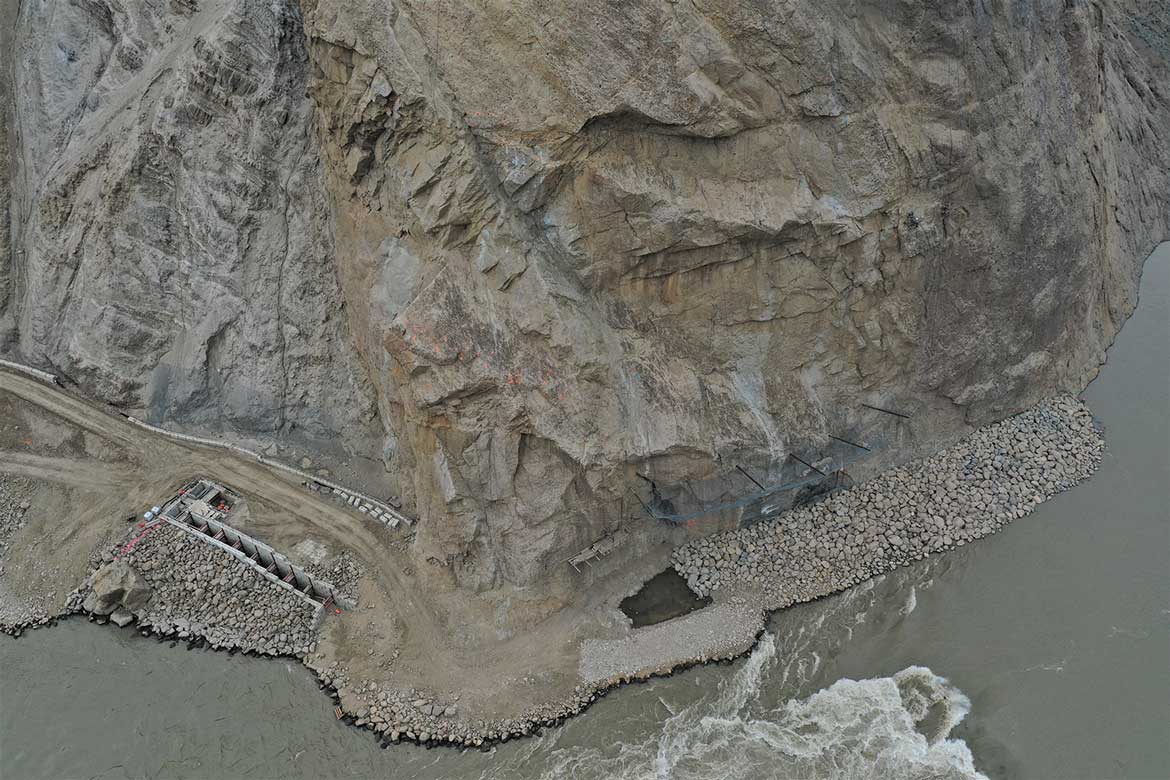
Aerial view of the concrete fish ladder (left) and the “nature-like” fishway (right) on West Beach.
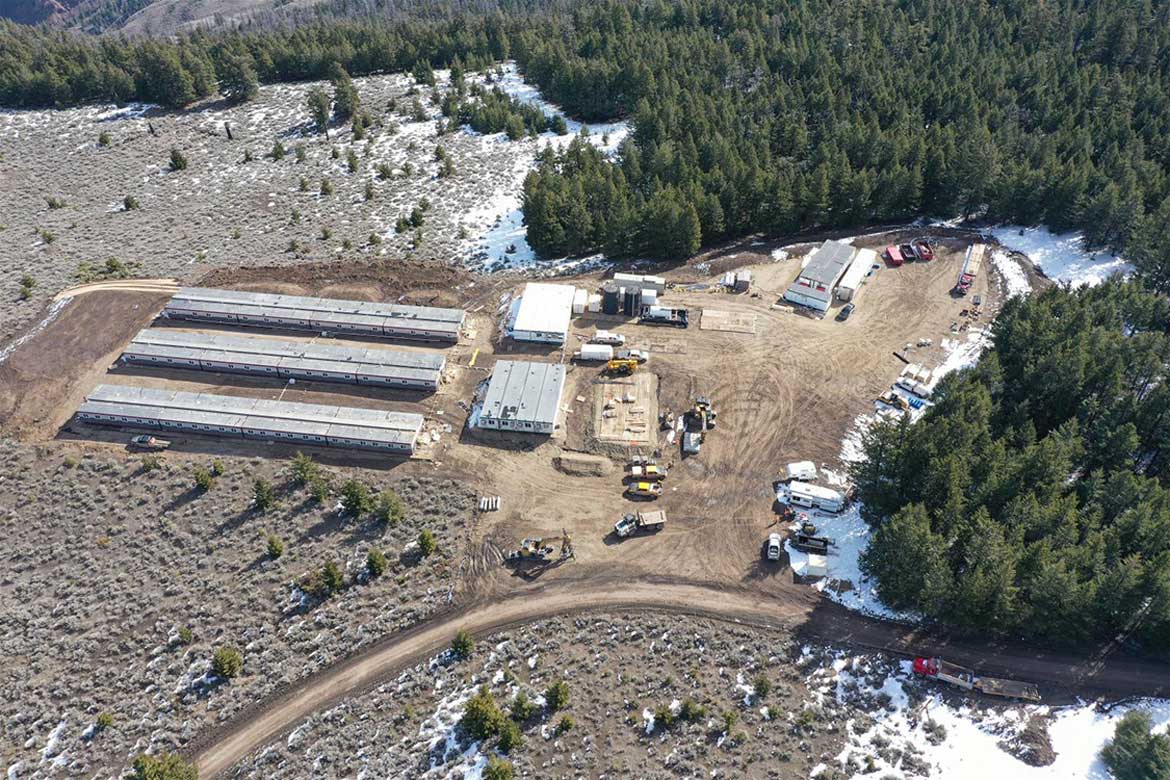
Aerial view of the work camp site at KM 96.
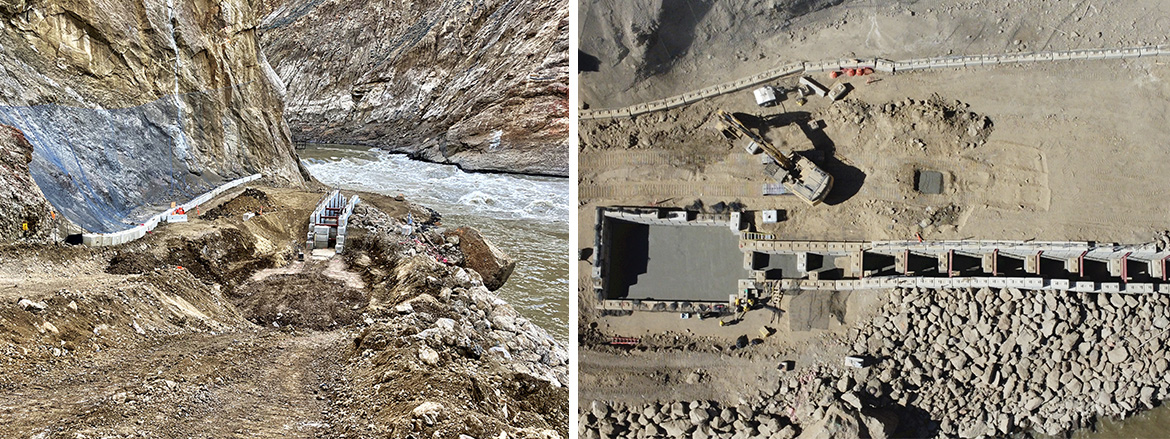
Crews excavated the area to the west of the concrete fish ladder to extend it for “trap and transport” operations this year.
https://www.pac.dfo-mpo.gc.ca/pacific-smon-pacifique/big-bar-landslide-eboulement/index-eng.html
wildmanyeah
Crew Member
Big Bar landslide response information bulletin
May 3 2021On this page
- Work advances on the concrete fish ladder ahead of the 2021 migration season
- Planning afoot for 2021 “trap and transport” program
- Chinook Main Road upgrade nears completion
- Current images of work being done at the landslide site
Work advances on the concrete fish ladder ahead of the 2021 migration season
With the onset of the spring freshet, work is focused on the concrete fish ladder at the West Beach area of the site. Originally built last year, the structure is undergoing some significant upgrades. This past week crews completed the final placement of blocks to expand the ladder. They sealed and backfilled the blocks, and poured the concrete base in the sedimentation basin. Handrails, wooden platforms and steel walkways are now being installed.To the south of the concrete fish ladder, workers are building out an area that will host a generator and fuel storage, as well as a crane pad for the ladder. A parking area on the upper bench of the Razorback is also being constructed that will serve as a storage and laydown area for summer operations.
Planning afoot for 2021 “trap and transport” program
Preparations for the 2021 “trap and transport” operations are advancing steadily, with the fabrication of the three new 17,500-litre fish transport tanks well underway. The tanks are custom-designed to hold up to 400 fish, depending on species and size. These larger capacity tanks will allow First Nations and DFO fisheries technicians to move more fish from the concrete fish ladder at West Beach to the French Bar Creek release site in less time. At the same time, the road network at the site is being upgraded to accommodate the larger rock trucks that will transport these tanks. The smaller 2,700-litre tanks from 2020 will be used to transport fish caught from the fish wheel.Based on lessons learned from 2020, a new organizational structure has been developed for the “trap and transport” and fish wheel operations led by St’a’timc Eco Resources, Gitksan Watershed Authorities and DFO. This structure will help ensure a collaborative decision-making approach and shared oversight of the day-to-day operations by all involved. The crews will primarily consist of members from High Bar First Nation and Stswecem'c Xgat'tem First Nation, who will work closely with DFO fisheries technicians. Knowledge sharing will underline the core of the operations, with a focus on supporting First Nations to build capacity in fish health sciences.
On April 20, First Nations and DFO team members met in Lillooet to review existing equipment such as fish tanks and safety gear to plan the inventory required for the upcoming summer program.
Chinook Main Road upgrade nears completion
Prime Quality Construction successfully concluded the road improvements from KM3.5 on the Salmon Road to KM5.8 on the Chinook Main Road. This stretch of road is now at least six metres wide. The side slopes have been reinforced with rock fill and vertical walls made of soil and fabric, also known as a Mechanically Stabilized Earth (MSE) wall. Crews also completed a “loop road”. These upgrades make the road safer for the crews that will drive the 17,000-litre fish transport trucks, allowing them to pass each other during transit.On April 24, Peterson Contracting completed surfacing work on the Chinook Main Road as well as the TC Trail. Once the roads have been watered, graded and packed down, they will be ready for hauling operations.
Current images of work being done at the landslide site
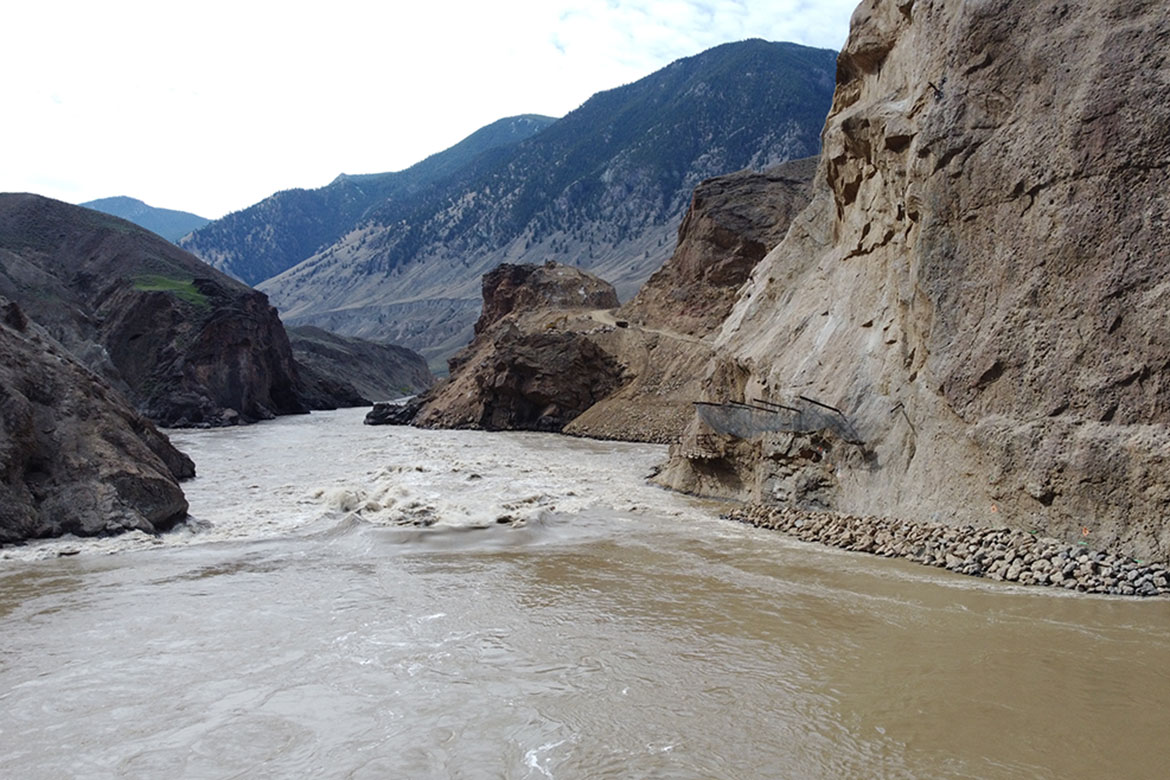 Drone footage shows the rising water levels in the Fraser River, now covering a portion of the “nature-like” fishway. Click to enlarge.
Drone footage shows the rising water levels in the Fraser River, now covering a portion of the “nature-like” fishway. Click to enlarge.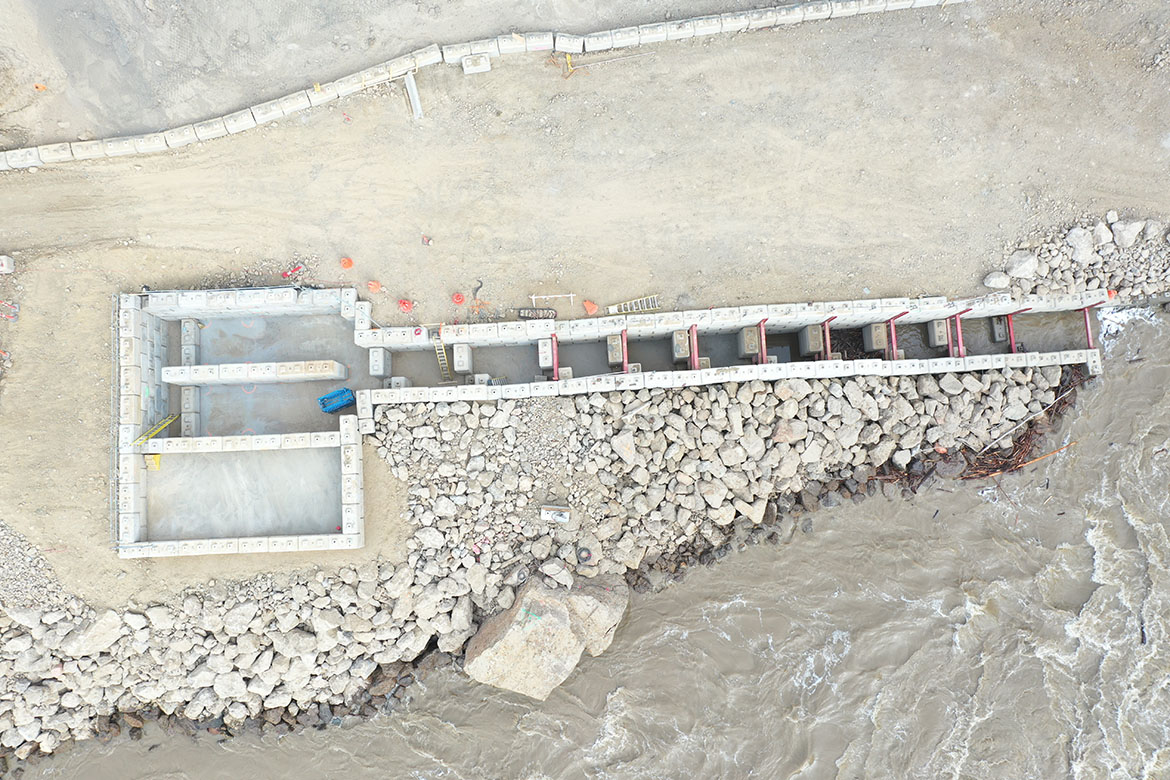 An aerial image of the concrete fish ladder; fish will swim up the ladder and into the holding area before being loaded into transport tanks for release upstream. Click to enlarge.
An aerial image of the concrete fish ladder; fish will swim up the ladder and into the holding area before being loaded into transport tanks for release upstream. Click to enlarge.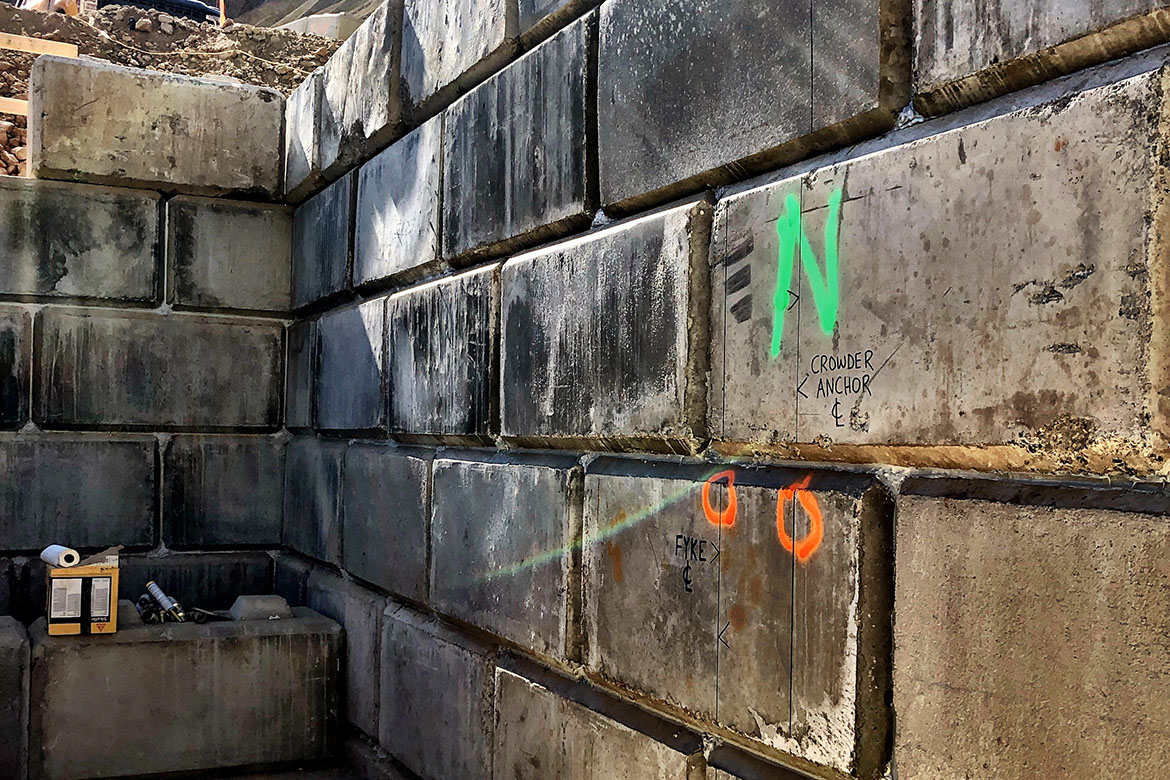 The newly poured concrete base and lock blocks of the fish ladder on the West Beach. Click to enlarge.
The newly poured concrete base and lock blocks of the fish ladder on the West Beach. Click to enlarge.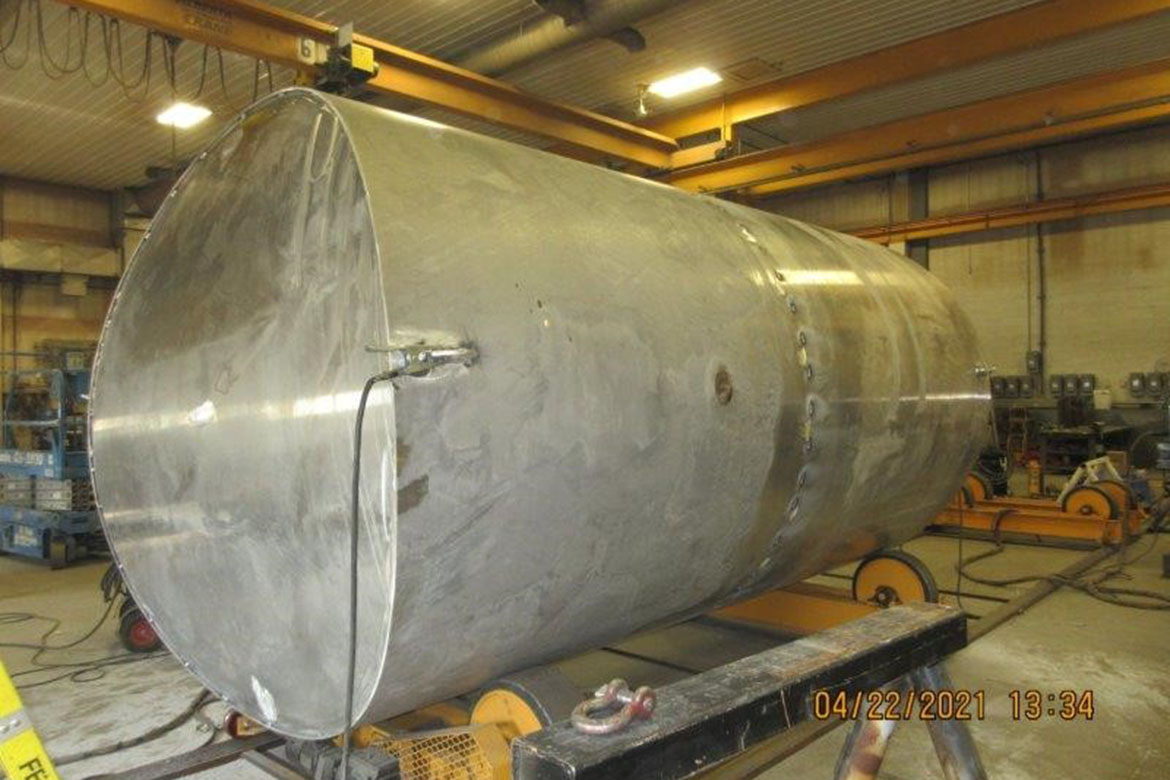 The custom-built 17,500-litre fish transport tanks to move more fish from the concrete fish ladder to French Bar Creek. Click to enlarge.
The custom-built 17,500-litre fish transport tanks to move more fish from the concrete fish ladder to French Bar Creek. Click to enlarge.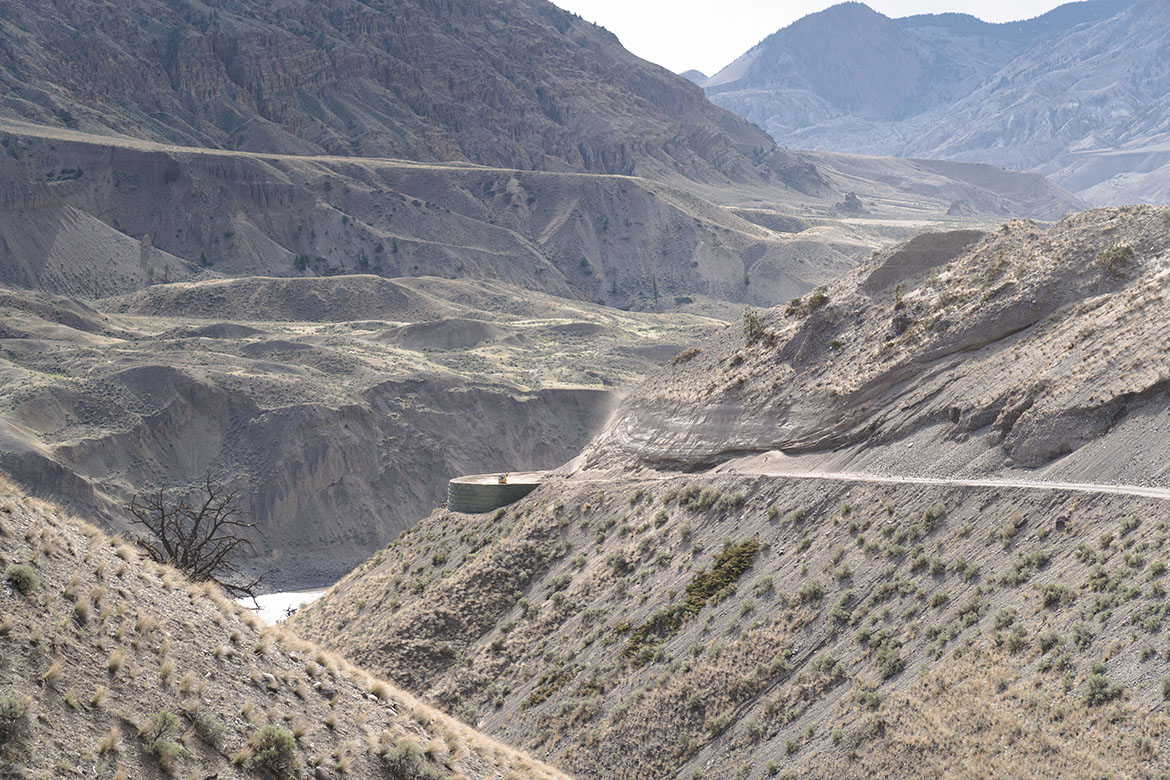 A MSE wall (centre of photo) supports the widened corner of the roadway, creating more space for passing trucks. Click to enlarge.
A MSE wall (centre of photo) supports the widened corner of the roadway, creating more space for passing trucks. Click to enlarge.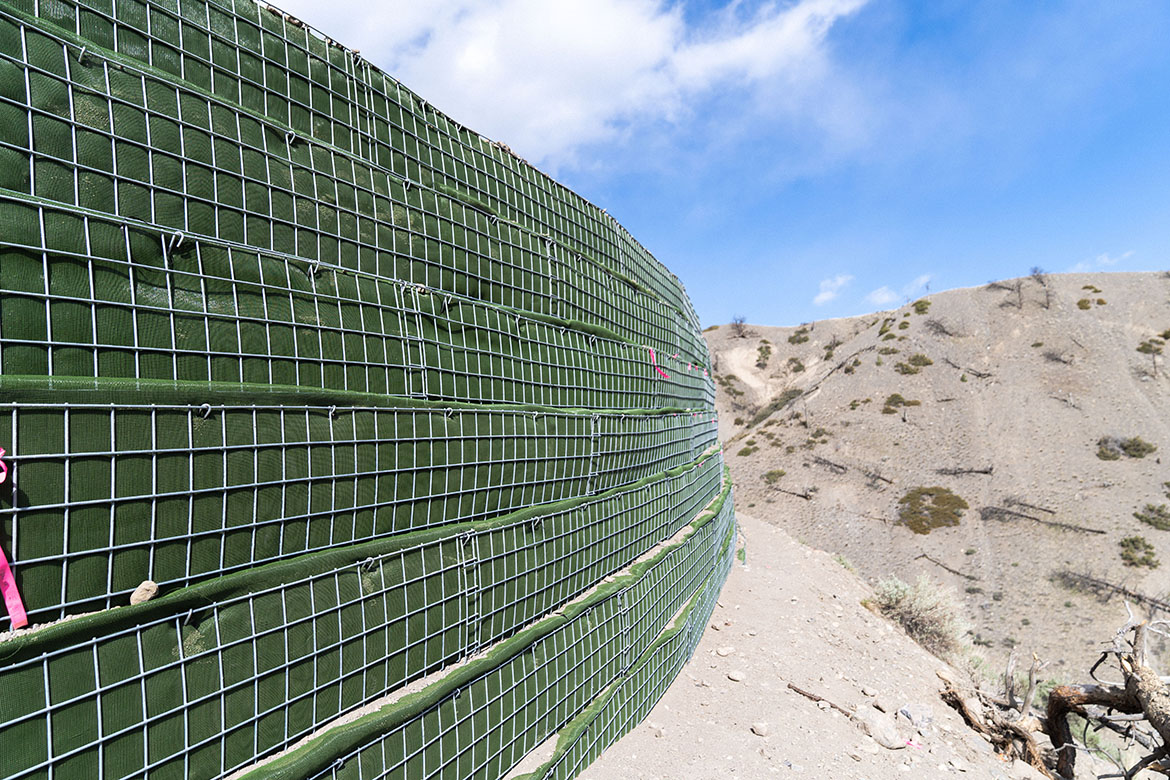 The MSE wall is built with stacked, "fabric-lined" wire mesh structural supports to reinforce the corner of the roadway. Click to enlarge.
The MSE wall is built with stacked, "fabric-lined" wire mesh structural supports to reinforce the corner of the roadway. Click to enlarge.Additional images of the work underway as part of our response efforts can be seen on the Government of BC’s Flickr channel.
GLG
Well-Known Member
Big Bar landslide response information bulletin
May 17 2021First Nations and Fisheries and Oceans Canada release 101,000 Chinook fry from 2020 Big Bar brood stock
Through April and May 2021, First Nations partners and Fisheries and Oceans Canada (DFO) staff released more than 101,000 Chinook fry into 12 different streams in the Upper Fraser Watershed as part of the Big Bar Emergency Conservation Enhancement Program. The fry were reared from gametes (eggs and milt) that were collected in 2020 from adult salmon captured both at the landslide site and in their natal streams.The releases are a critical step towards supporting the long-term survival of vulnerable salmon stocks; they represent a significant success for the enhancement program in response to the Big Bar landslide.
Planning for the releases began in 2020 and included collaboration with First Nations technical experts from the Upper Fraser and with the Upper Fraser Fisheries Conservation Alliance. First Nation partners remain integral to the success of the enhancement program. Local knowledge provides guidance to the Big Bar response team, identifying, for example, when and where to collect brood stock and where to release fry.
First Nations and DFO fisheries technicians collected adult Chinook from the Fraser River below the slide site and in the Upper Fraser in 2020 through fish wheel operations. The adults were transported to the Nechako White Sturgeon Conservation Centre in Vanderhoof where they were held until maturity. Eggs and milt were collected and then transferred to the Quesnel River Research Centre (QRRC) for fertilization and incubation to the ‘eyed’ stage. In early fall 2020, some of the eyed eggs were relocated to the Spius Creek and Chehalis River hatcheries, while others remained at QRRC. The fish have since been reared at each of the three facilities.
The resulting fry were released this spring into streams, creeks and rivers across the Upper Fraser using trucks and a helicopter. Due to rising spring flows and currents, care was taken to release the fry at optimal times and locations. These locations will be quickly imprinted on the fry; they will then spend the next 11 to 12 months in various freshwater habitats. Next year, in late April and early May, the juvenile salmon will enter the Fraser River estuary as yearling Chinook smolts. After another two to four years spent in the ocean, the salmon will return to the Fraser River and migrate back to their natal streams to spawn, thus completing the cycle of life.
The Big Bar emergency enhancement efforts are equally important for First Nations communities who rely on the health of these runs for food security as well as social and ceremonial needs. In recognition of the cultural significance of salmon, members of the Nak’azdli Whut’en, Lhtako Dene Nation, Simpcw First Nation, Tsilhqot’in Nation and Nazko First Nation participated in these events. They witnessed several releases and performed blessing ceremonies for the survival and safe return of the salmon to their natal spawning grounds.
Planning is currently underway for the 2021 enhancement program for Chinook and sockeye as part of the Big Bar landslide response.
Preparations for summer operations enter final stages
Crews are heading into the final stretch, preparing for summer operations at Big Bar as rising water levels along the Fraser River signal the start of Fraser salmon migration.At West Beach, generators for the concrete fish ladder are being installed. Pumps to supply water to the ladder are positioned in the Fraser River and the supply lines are connected. Crews have installed diffuser panels, which will help control the flow of water entering the ladder from the river. Metal work for the ladder is also on track with the fabrication and installation of aluminum walkways and handrails.
To ensure worker safety, rock stabilization is ongoing with the installation of protective steel mesh, rock bolting and ongoing rock scaling on the south face.
Finally, work at other locations is also progressing. The Chinook Main road upgrade between the slide site and French Bar Creek is nearly complete while work on the crew camp at KM96 is being finalized.
Current images of work being done at the landslide site
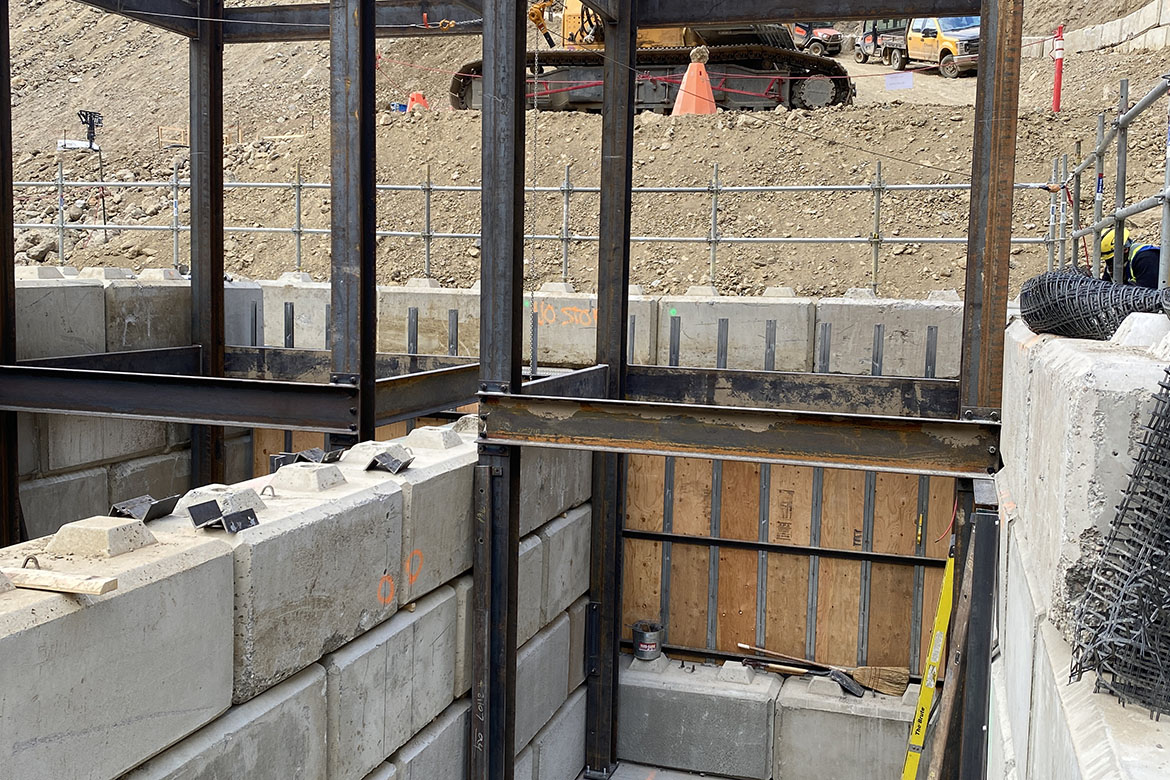
A close-up of the steel hopper structure in the fish ladder; at rear, wooden diffuser panels can be adjusted to control the flow of water pumped in from the river, now covering a portion of the “nature-like” fishway.
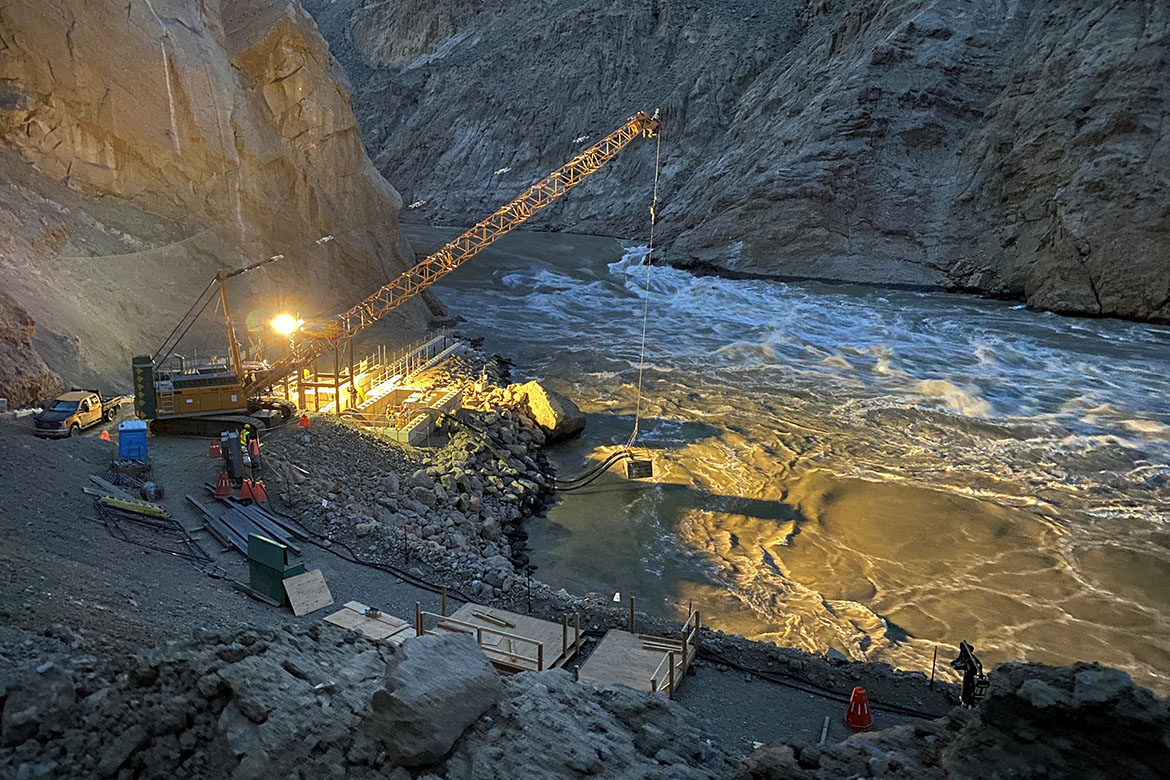
Pumps for the fish ladder being placed in the river by crane.
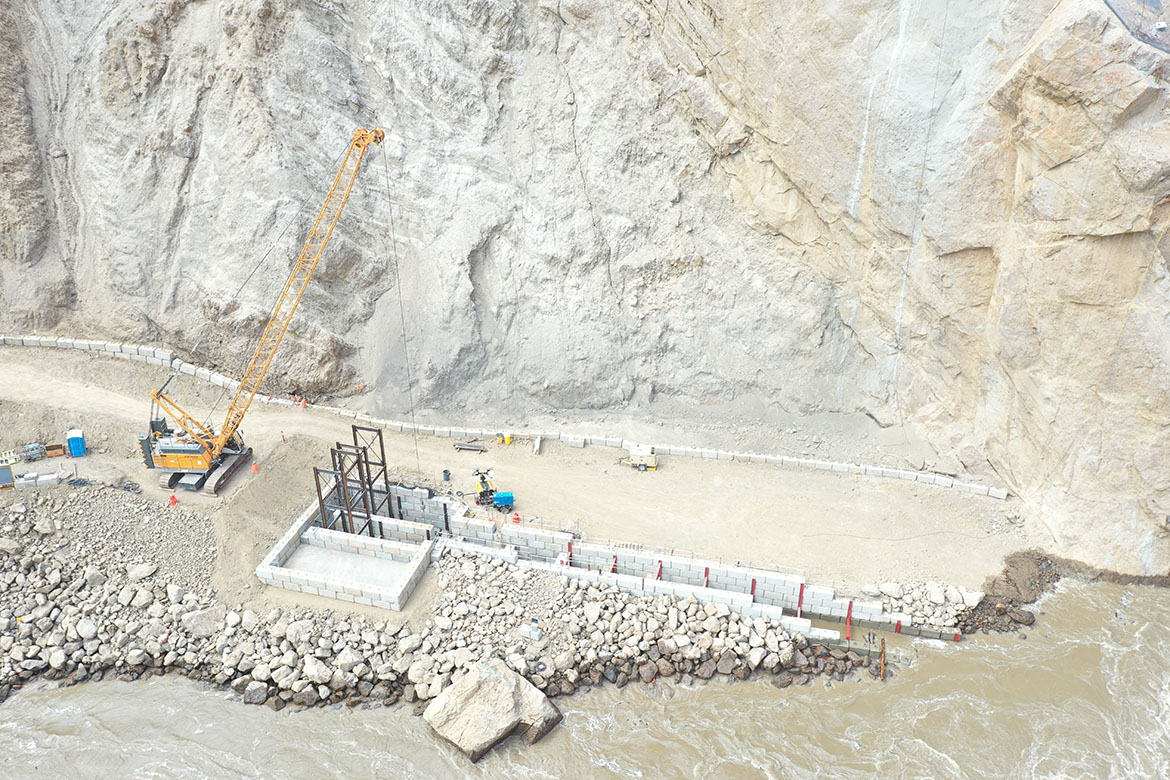
An aerial view of the fish ladder and the crane used to install the steel infrastructure and water supply lines.
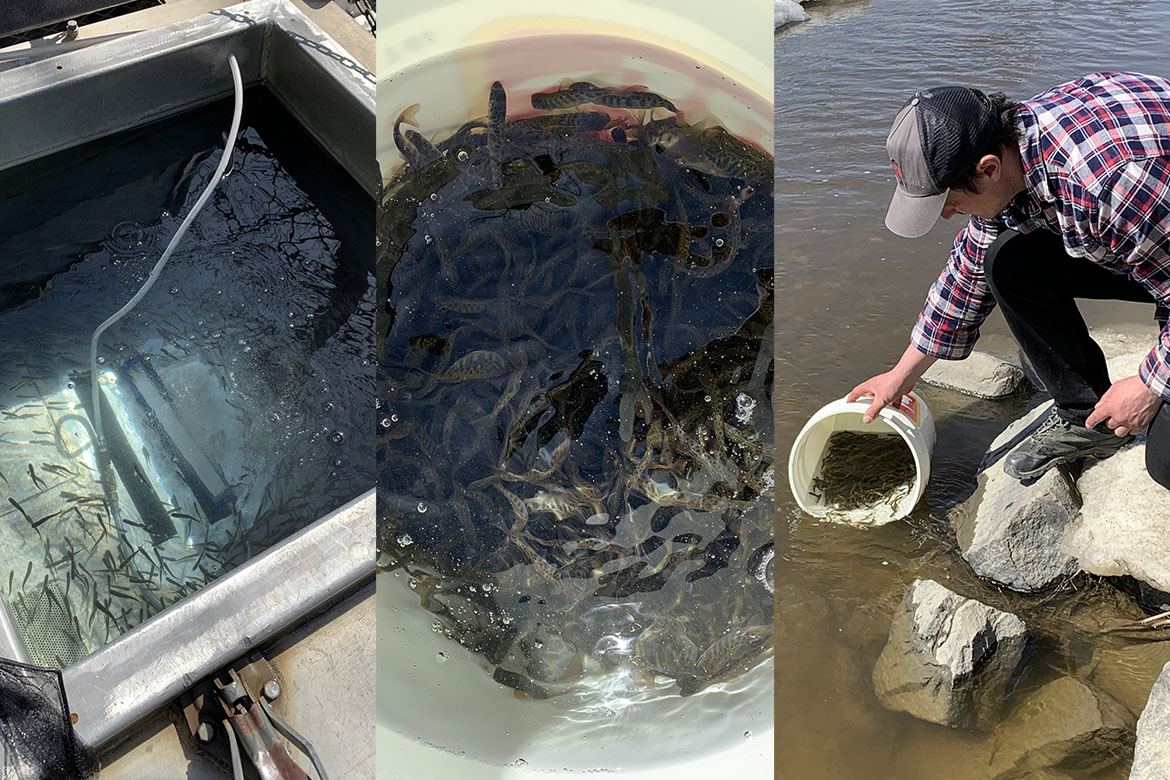
A fisheries representative for the Lhtako Dene Nation attended the first of 12 releases on April 13, 2021, with the return of 9,900 Chinook fry into the Cottonwood River.
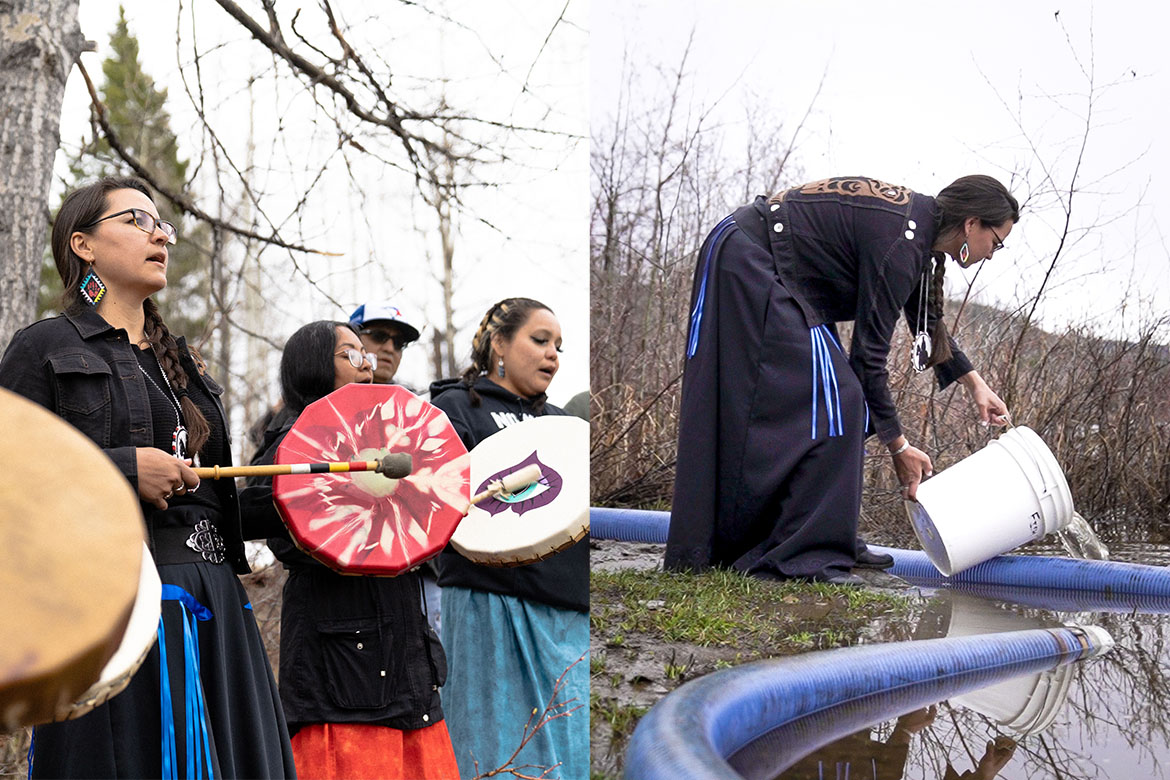
On April 27, 2021, Chief Leah Stump and members of the Nazko First Nation performed a blessing ceremony before the release of 15,300 Chinook fry into the Blackwater River.
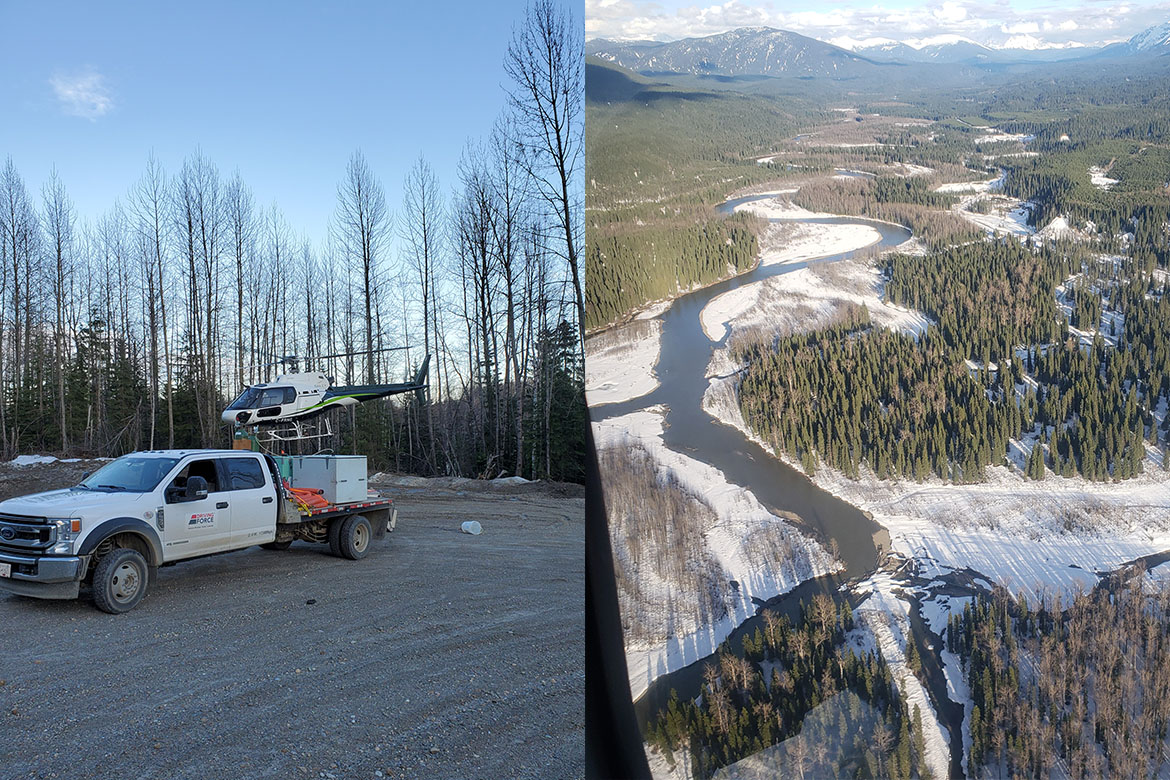
On May 4, 12,600 Chinook fry were released into the McGregor River via helicopter: one of four releases by air due to the remote stream locations.
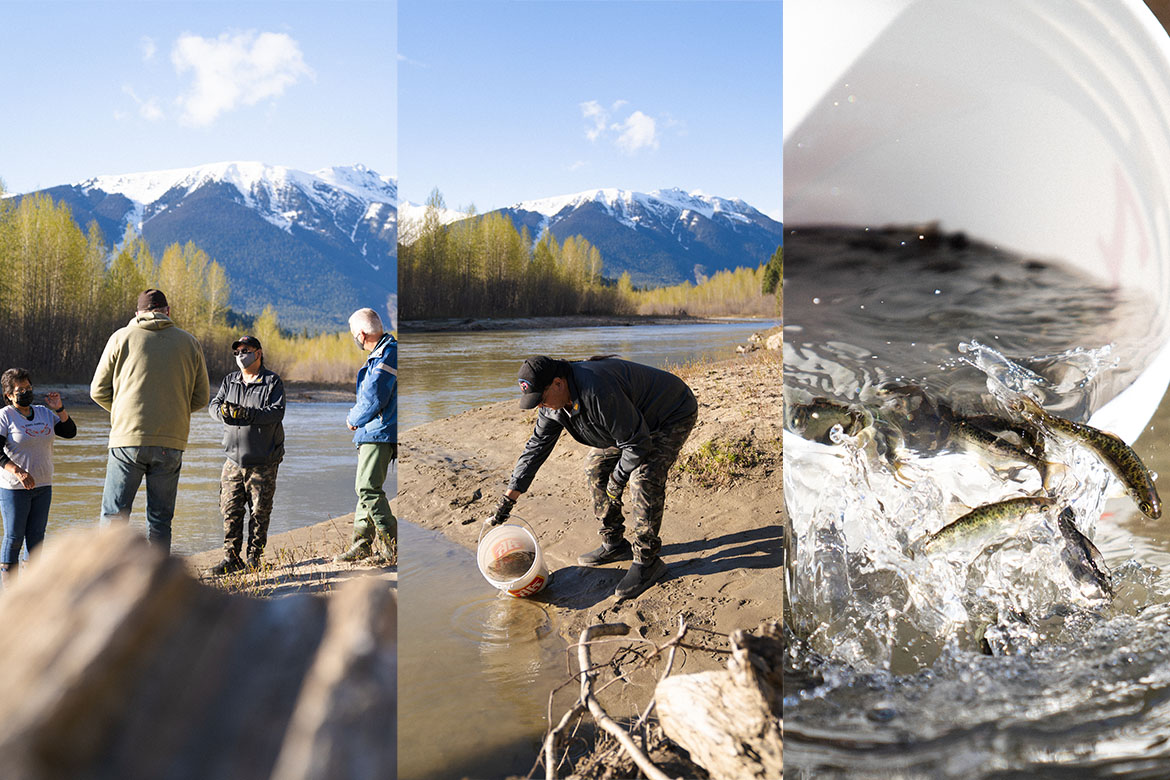
On May 10, 2021, Greg Witzky, Operations Manager with the Fraser Salmon Management Council and a representative of the Big Bar Joint Executive Steering Committee, participated in the release of 13,600 Chinook fry into Morkill River. Councilor Tina Donald and her daughter, Tiffany Bowser, from Simpcw First Nation, as well as DFO and QRRC staff participated in a traditional tobacco offering and a Secwepemc prayer to send the Chinook fry on their journey.
https://www.pac.dfo-mpo.gc.ca/pacific-smon-pacifique/big-bar-landslide-eboulement/index-eng.html
wildmanyeah
Crew Member
Big Bar landslide response information bulletin
May 31 2021On this page
- From planning to implementation, preparations for summer operations ramp up at Big Bar
- Current images of work being done at the landslide site
From planning to implementation, preparations for summer operations ramp up at Big Bar
In anticipation of the arrival of early-season salmon, the Big Bar landslide response efforts are ramping up onsite with assisted passage systems and the monitoring program coming online.Last week, First Nations and DFO technicians met onsite to prepare for the “trap and transport”, fish wheel and monitoring operations. Following a site and safety orientation, the team re-acquainted itself with the work site, setting-up the fish transport trucks and organizing the necessary equipment. This preparation time, before the arrival of the first Chinook, is critical for reviewing operational plans developed over the winter and identifying areas for improvement to ensure a smooth work season ahead.
The concrete fish ladder is nearing completion as crews put the final touches on the steel structure that will be used to collect fish for the “trap and transport” program. The work includes testing components such as the water pumps and the fish lift used to remove fish from the ladder, and installing a swing gate to direct fish between cells within the ladder. The first of three fish transport trucks arrived onsite on May 24 with the remaining two expected shortly after.
Fish monitoring remains key to understanding fish quantities, movement and health in near real time at Big Bar. As part of the expanded program in 2021, an array of cameras and sensors were installed along the path of the “nature-like” fishway to provide more detailed information about fish movement between June and the end of the migration in November. No fish have been detected at the slide site at this time although a Chinook was recently caught and released near Lillooet, 60 km to the south.
Rock protection work is ongoing with scaling and rock bolting happening daily above the rock fall canopy and along the south face of the cliff, West Beach and the Razorback.
Current images of work being done at the landslide site
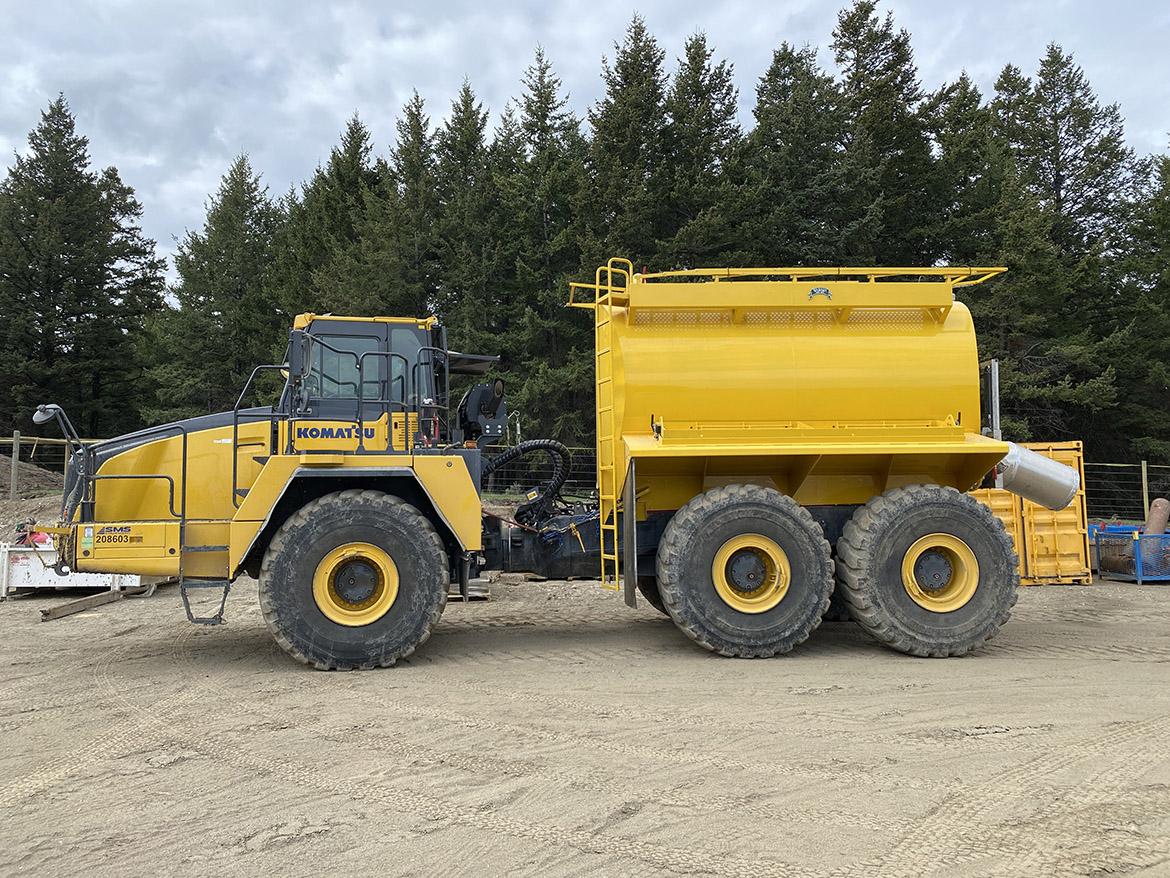 One of three “trap and transport” trucks that will carry fish from the concrete fish ladder and the fish wheel to a release point upstream. Click to enlarge.
One of three “trap and transport” trucks that will carry fish from the concrete fish ladder and the fish wheel to a release point upstream. Click to enlarge.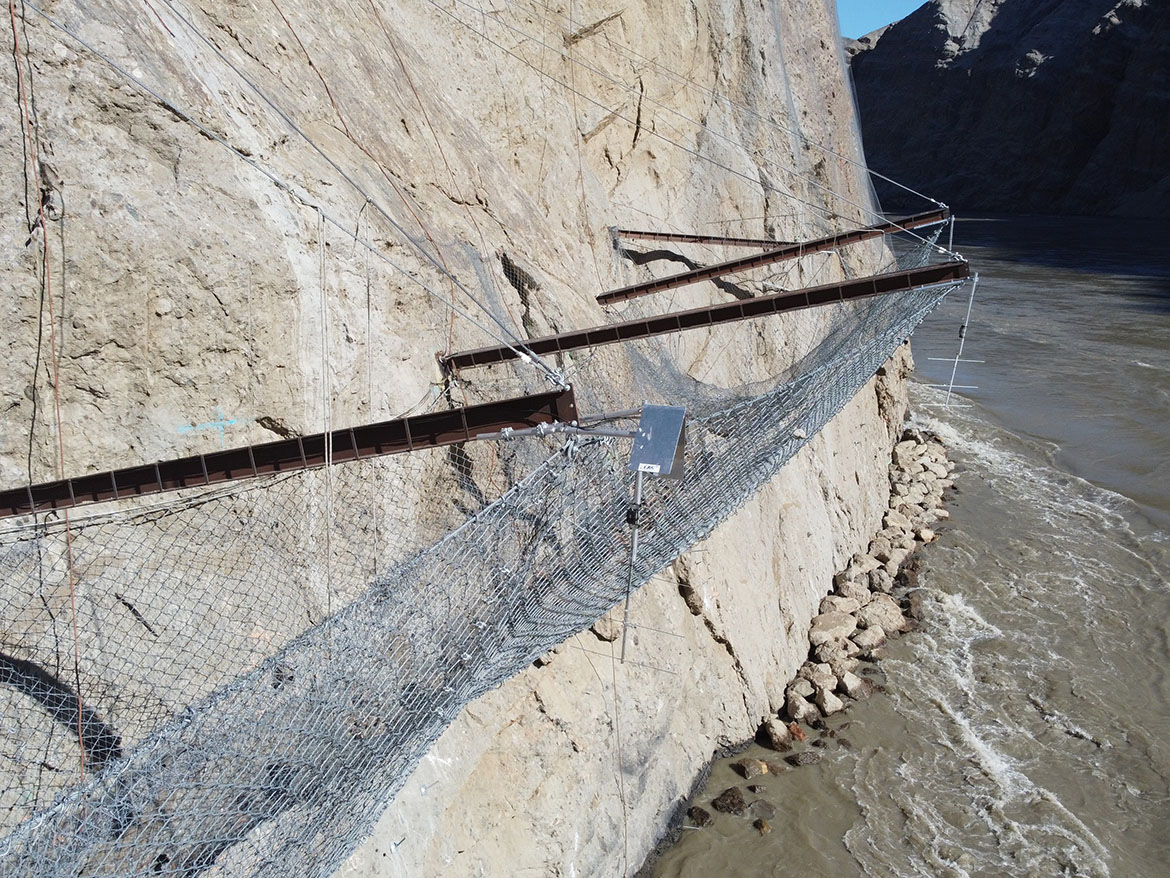 Cameras and sensors are mounted above the “nature-like” fishway to monitor fish movement this season. Click to enlarge.
Cameras and sensors are mounted above the “nature-like” fishway to monitor fish movement this season. Click to enlarge.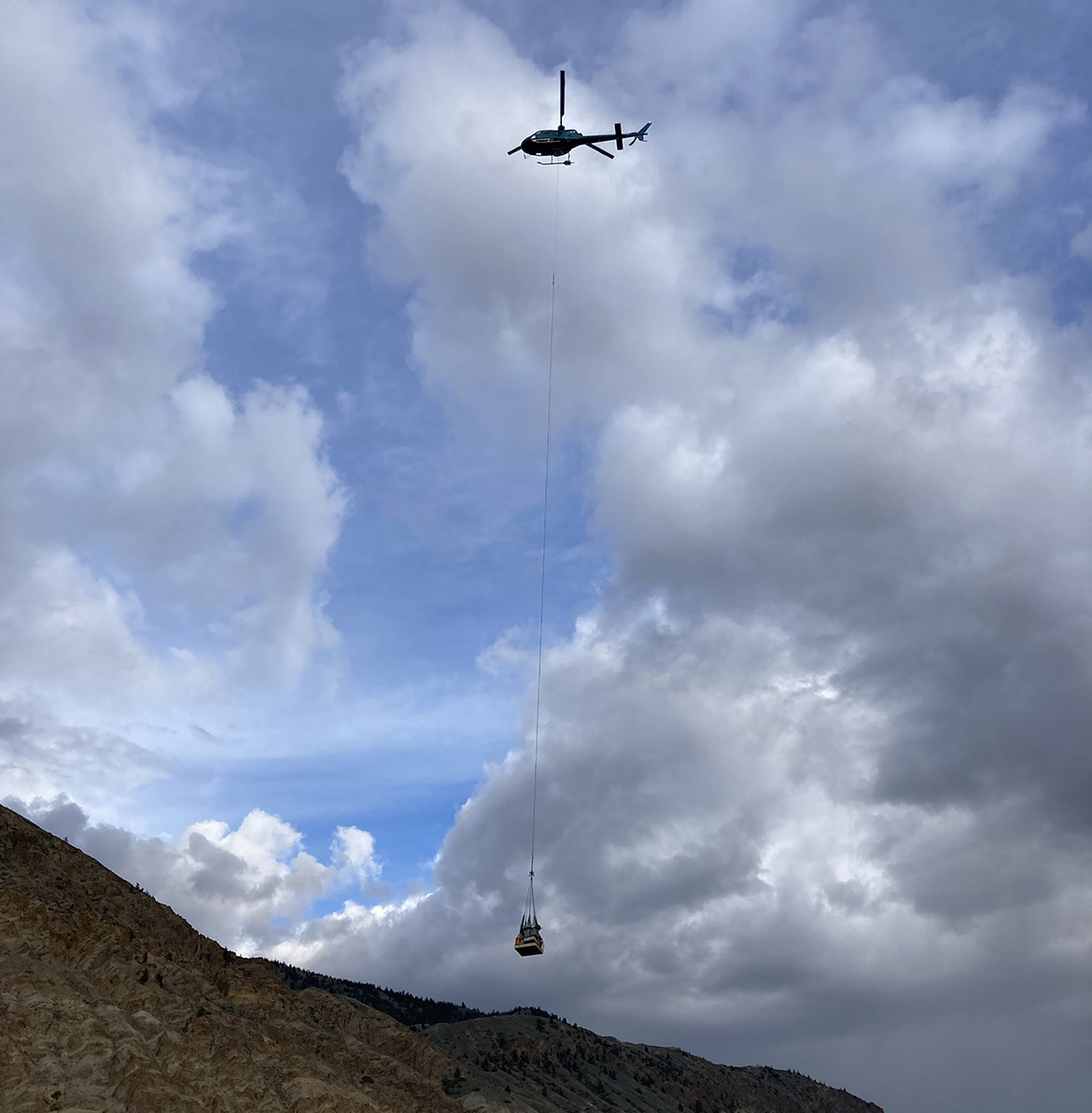 A helicopter delivers cameras, sensors and cables for installation along the west face of the cliff. Click to enlarge.
A helicopter delivers cameras, sensors and cables for installation along the west face of the cliff. Click to enlarge.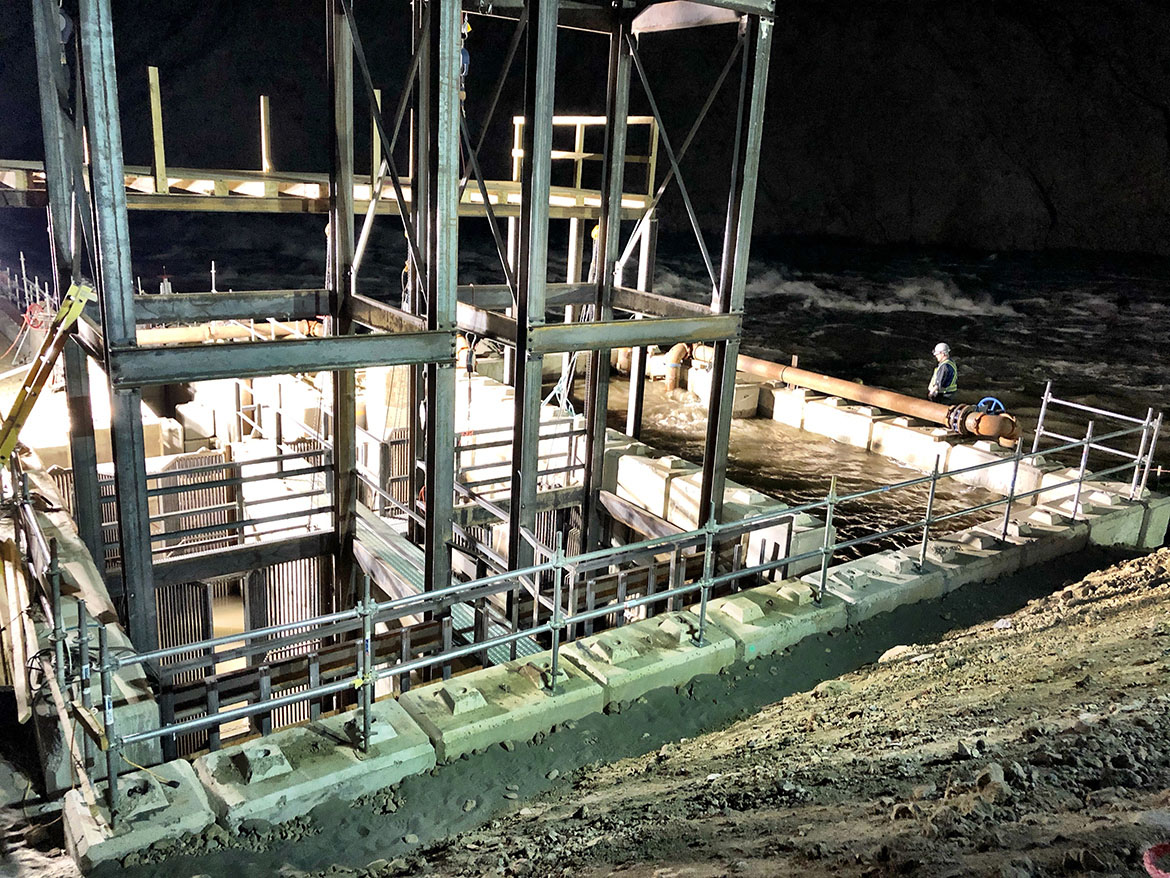 Cameras and sensors are mounted above the “nature-like” fishway to monitor fish movement this season. Click to enlarge.
Cameras and sensors are mounted above the “nature-like” fishway to monitor fish movement this season. Click to enlarge.Additional images of the work underway as part of our response efforts can be seen on the Government of BC’s Flickr channel.
wildmanyeah
Crew Member
Big Bar landslide response information bulletin
June 14 2021On this page
- Crews implement additional measures in anticipation of high water at Big Bar
- 2021 enhancement operations to begin soon
- First Nations and DFO release 60,800 Early Stuart Sockeye fry from 2020 to support salmon population impacted by the Big Bar landslide
- Refining 2021 summer operations with First Nations guidance
- Current images of work being done at the landslide site
Crews implement additional measures in anticipation of high water at Big Bar
In early June, with water levels expected to exceed 7,000 cubic metres per second (cms), crews shifted focus to prepare for high water. Components of the concrete fish ladder structure were temporarily dismantled, precision monitoring equipment removed and the fish wheel relocated to prevent potential harm.On June 7, freshet flows peaked at 6,400 cms but have since started to drop, allowing crews to safely return and reassemble equipment. On the same day, “trap and transport” crews from High Bar First Nation and Stswecem'c Xgat'tem First Nation arrived onsite for their first shift of the season. When fish start to arrive at site, transport by truck will only occur when they are unable to migrate past the barrier on their own; this approach will minimize handling and risk to the salmon.
Rock fall protection work is ongoing, including repairs to the north mesh, a mini-drape net hung on the south slope and bolting of rocks along the Razorback.
2021 enhancement operations to begin soon
Fish wheel operations in Lillooet are expected to begin in early July 2021. The Gitksan Watershed Authorities, St’at’imc Eco Resources and Splitrock Environmental, in partnership with DFO, intend to capture approximately 800 Early Stuart sockeye to serve as brood stock for emergency conservation enhancement. Collecting these at-risk fish downstream of the slide will allow quicker transport to the DFO facility at Cultus Lake, reducing stress to the fish. The Lillooet fish wheel will also be used to capture and radio tag salmon to track migration.Due to the current high water, monitoring activities have been temporarily paused.
First Nations and DFO release 60,800 Early Stuart Sockeye fry from 2020 to support salmon population impacted by the Big Bar landslide
On June 8, 2021, First Nations and DFO released 60,800 Early Stuart sockeye fry into Gluske Creek near Fort St. James and into Hudson Bay Creek near Takla Landing as part of the ongoing Big Bar landslide response. The eggs were collected from adults captured at the slide site in the summer of 2020. The release builds on the emergency enhancement work underway since 2019; it is a critical step towards supporting the long term survival of the at-risk early-season sockeye.Planning for the release began in 2020 in partnership with the Takla Nation, Nak’azdli Whut’en, Tl’azt’en Nation, the Carrier Sekani Tribal Council, Upper Fraser Fisheries Conservation Alliance and staff from DFO’s Salmonid Enhancement Program.
These fry were reared from eggs and milt collected from adult salmon that arrived at the landslide site during the 2020 migration season. The adults were transported to the Cultus Lake Research Laboratory outside of Chilliwack, where they were held until they matured, at which point eggs and milt were collected. Following several weeks of incubation at the laboratory, the eggs were then relocated to Inch Creek Hatchery near Mission, where they were reared until they were transported to their natal streams on June 8. The released fry will now imprint on creeks, streams and lakes in the Stuart River watershed. In spring 2022, they will make the 1,200-kilometre journey to the ocean as sockeye smolts. After two or three years in the Pacific, they will return to the Fraser River and migrate back to their natal streams in the Takla-Trembleur region of this watershed.
The emergency enhancement program targeted Early Stuart sockeye blocked by the Big Bar landslide in 2019. The resulting juvenile sockeye were released into the Stuart River watershed in 2020.
Some of the lowest returns of early-season Fraser River sockeye were recorded in 2019 and 2020. While the natural passage of later timed sockeye to the Chilko and other Upper Fraser systems were more successful, a number of factors impacted the early migrating Fraser River salmon.
In 2019, fish were stalled for significant time at the slide area while repeatedly trying to pass through the canyon. This delay was compounded by severe flooding in the Chilcotin and Blackwater watersheds that July. In trying to pass the slide, they injured themselves and depleted their remaining energy reserves. Other salmon that were captured and carried over the slide in transport tanks also had low survival rates due to exhaustion and injury. In 2020, in addition to the remaining slide debris, severe high-water conditions on the Fraser River watershed slowed and stopped the migration of earliest timed sockeye stocks, devastating population numbers. Even the fish that were able to pass the slide mostly died from exhaustion along their migration routes.
In both 2019 and 2020, less than one percent of the Early Stuart sockeye that entered the Fraser River from the Pacific Ocean reached the Stuart River watershed to spawn. Therefore, fish taken into DFO’s Salmonid Enhancement Program are a critical part of recovery efforts for a population under severe conservation threat and listed as endangered by the Committee on the Status of Wildlife in Canada.
Recent upgrades to DFO hatcheries, such as Inch Creek’s expanded capacity, have enabled DFO to broaden its Early Stuart sockeye strategies. In addition to the 60,800 spring fry release, another 50,000 Early Stuart sockeye parr (a stage between fry and smolt) will be released in late summer 2021. Combined, these releases will support higher juvenile-to-adult survival rates. Most recently, on May 12, 11,000 Bowron Lake sockeye fry, another stock impacted by the landslide, were also released by helicopter into their natal stream. DFO and Indigenous partners will evaluate the results of this work when the adults return to spawn in 2024 and 2025.
This season, plans are in place for DFO and First Nations to conduct a third year of emergency conservation enhancement for sockeye and Chinook as part of the Big Bar landslide response. This work will be supported by Upper Fraser First Nations’ facilities, community hatcheries and DFO facilities.
wildmanyeah
Crew Member
Refining 2021 summer operations with First Nations guidance
The “trap and transport” and emergency enhancement programs strive for continuously better returns. The 2021 approach was developed based on feedback from First Nations partners who were on the front lines of the 2019 and 2020 summer operations. This included members of the truck transport and fish wheel operations, technical working groups and the Joint Executive Steering Committee. Building on these collective experience and knowledge, the response team further refined its plans for a more efficient and seamless execution in 2021.This year’s approach was modified to include a DFO and First Nations co-managed operation. The first step was the creation of an organizational structure and the appointment of DFO and First Nations co-leads for onsite management. Clearly defined roles and work descriptions were developed and decision-making processes were established. This structure ensures there are adequate First Nation technical experts and experienced DFO staff in place to support “trap and transport”, fish wheel and natal stream collection operations.
Other feedback being implemented this year includes:
- Focused task groups with members working throughout winter 2020 and spring 2021 to develop enhancement evaluation frameworks with an emphasis on natal stream Chinook collection;
- Improved design, development and implementation of “truck and transport” operations, including water-to-water transfer to minimize handling stress on fish;
- Moving enhancement operations for Early Stuart sockeye to Lillooet to alleviate pressure on staff and equipment; and
- An upgraded road network to accommodate large transport trucks with pull-out locations and improved signage for safer and more efficient traffic flow.
Current images of work being done at the landslide site
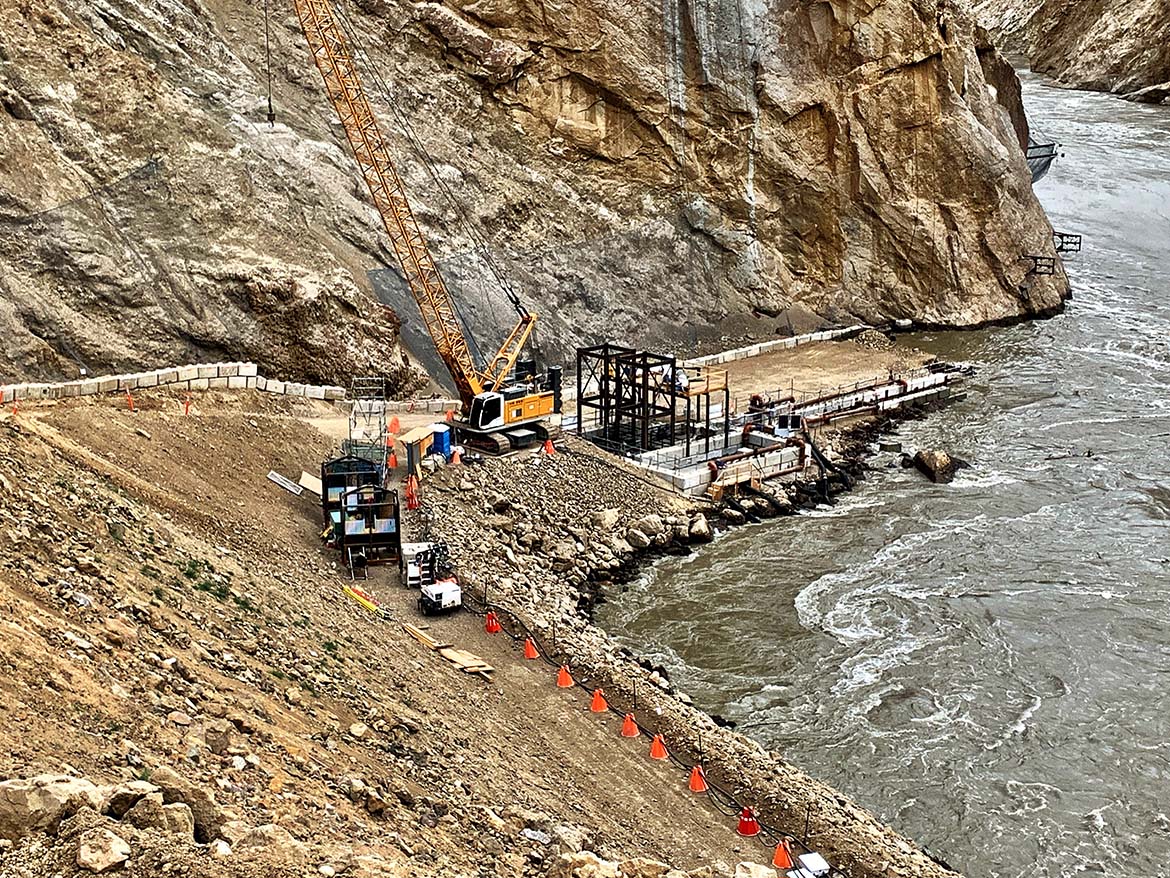 The fish ladder on June 5 showing high water at the site. Click to enlarge.
The fish ladder on June 5 showing high water at the site. Click to enlarge.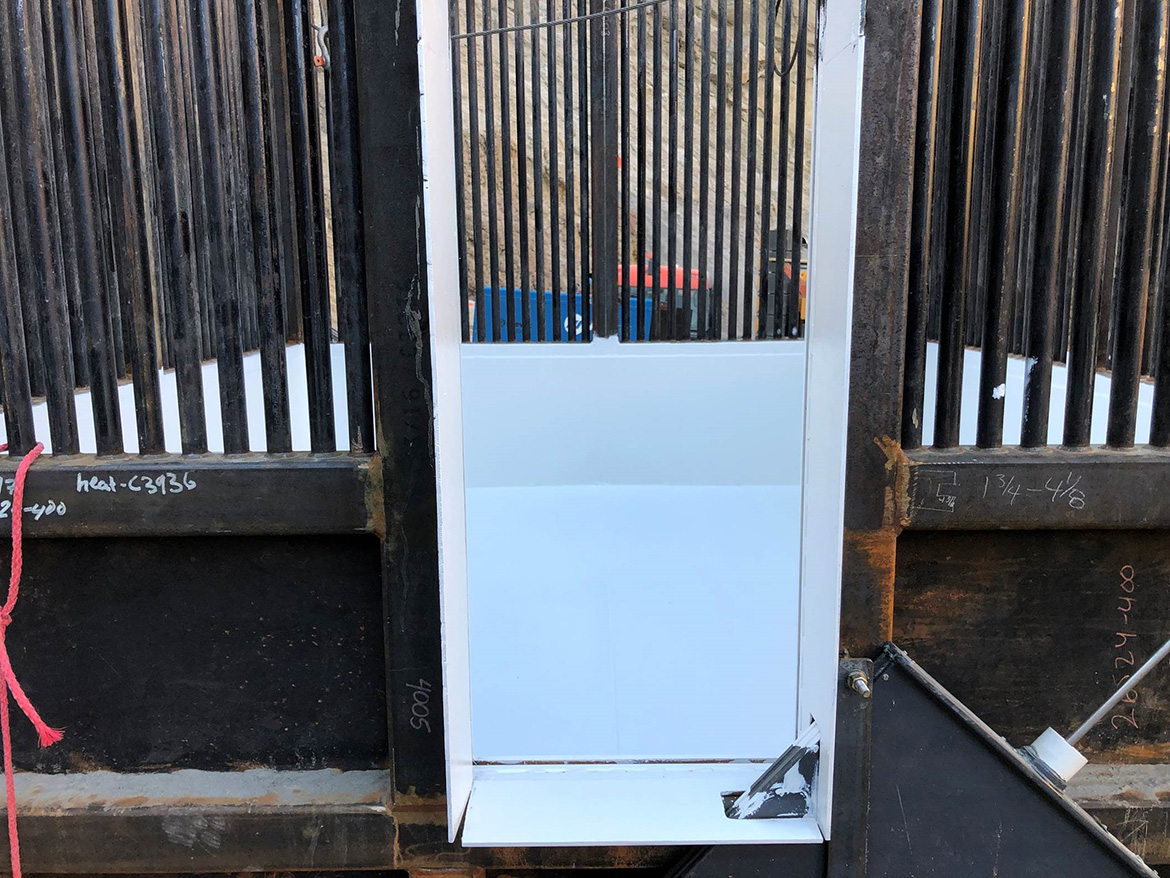 DFO staff painted parts of the hopper with white marine paint to protect fish from abrasion from the metal surface and to increase visibility for counting the salmon. Click to enlarge.
DFO staff painted parts of the hopper with white marine paint to protect fish from abrasion from the metal surface and to increase visibility for counting the salmon. Click to enlarge.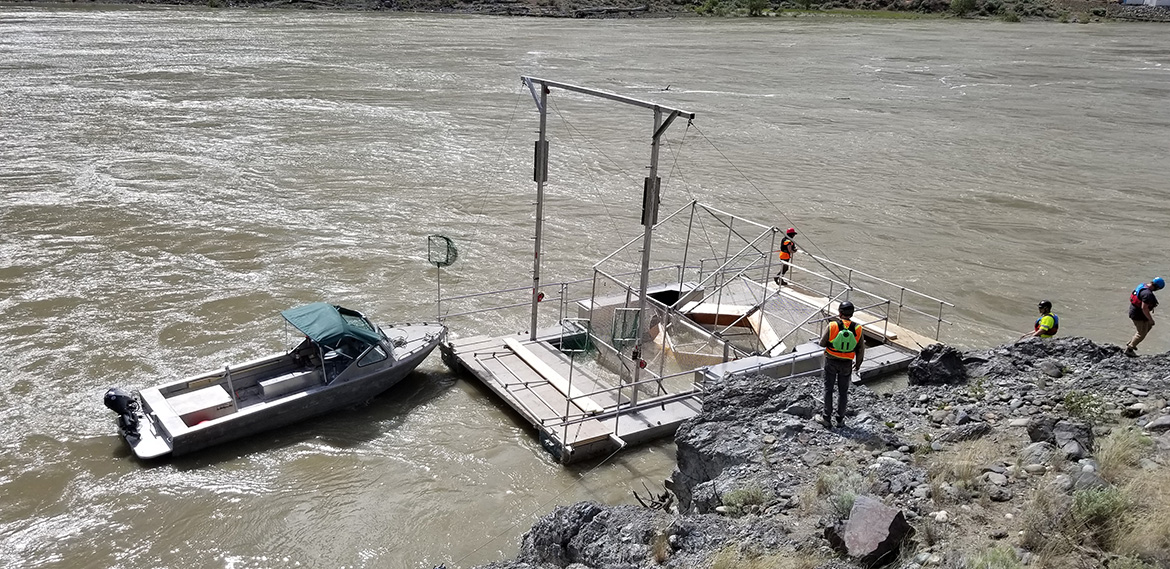 The fish wheel at Big Bar will collect fish for both transport and radio tagging. A second fish wheel in Lillooet will collect Early Stuart sockeye for enhancement and for radio tagging to track their progress past the slide and through the Upper Fraser watershed. Click to enlarge.
The fish wheel at Big Bar will collect fish for both transport and radio tagging. A second fish wheel in Lillooet will collect Early Stuart sockeye for enhancement and for radio tagging to track their progress past the slide and through the Upper Fraser watershed. Click to enlarge.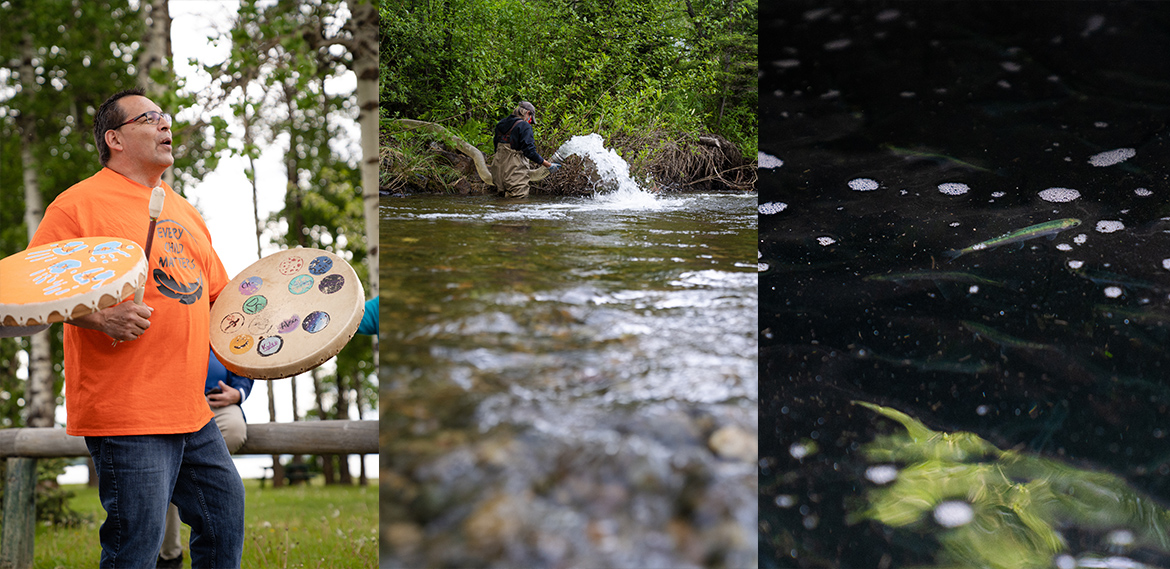 On June 8, Guy Prince (left) was joined by fellow community members from Nak’azdli Whut’en and DFO fisheries technicians (middle) to successfully release 60,800 Early Stuart sockeye fry (right) into Gluske Creek. Click to enlarge.
On June 8, Guy Prince (left) was joined by fellow community members from Nak’azdli Whut’en and DFO fisheries technicians (middle) to successfully release 60,800 Early Stuart sockeye fry (right) into Gluske Creek. Click to enlarge.Additional images of the work underway as part of our response efforts can be seen on the Government of BC’s Flickr channel.
wildmanyeah
Crew Member
Salmon counts at the Big Bar landslide site | Pacific Region | Fisheries and Oceans Canada
Salmon counts at the Big Bar landslide site
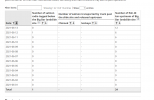
donnie d
Well-Known Member
The water levels dropped fast after June 7 peak. With the rock fishway they built fish passage will be achieved at that 4000-3500m3 level. Picked up a bit today, the warm weather won’t help this weekend. Let’s hope those numbers continue.Salmon counts at the Big Bar landslide site | Pacific Region | Fisheries and Oceans Canada
Salmon counts at the Big Bar landslide sitewww.pac.dfo-mpo.gc.ca
View attachment 67206
Similar threads
- Replies
- 0
- Views
- 553
- Replies
- 7
- Views
- 837
- Replies
- 3
- Views
- 545
- Replies
- 0
- Views
- 1K

